10. Wearables¶
 Photo by Rebecca Louise Breuer
Photo by Rebecca Louise Breuer
This week we looked into the Wonderful World of Wearables. Whilst everybody seems to be hooked on their smart phones, smart garments haven't quite gained territory. Yet. Yes, yet! In 1998 (if references are right) Dutch documentary maker Frans Bromet (& daughters) interviewed people on the street about their thoughts concerning mobile phones. Watch and think. It is in Dutch but perhaps you can see and hear that very few people indicate a mobile phone will be convenient. It is my intuition that wearables may just take on a similar path. All we need is some more thinking and creating...
End Results¶
This week, I created a coconut speaker, an electro magnetic flapper and a soft speaker. The latter I will do again with a longer coil and a thread that will stay intact.
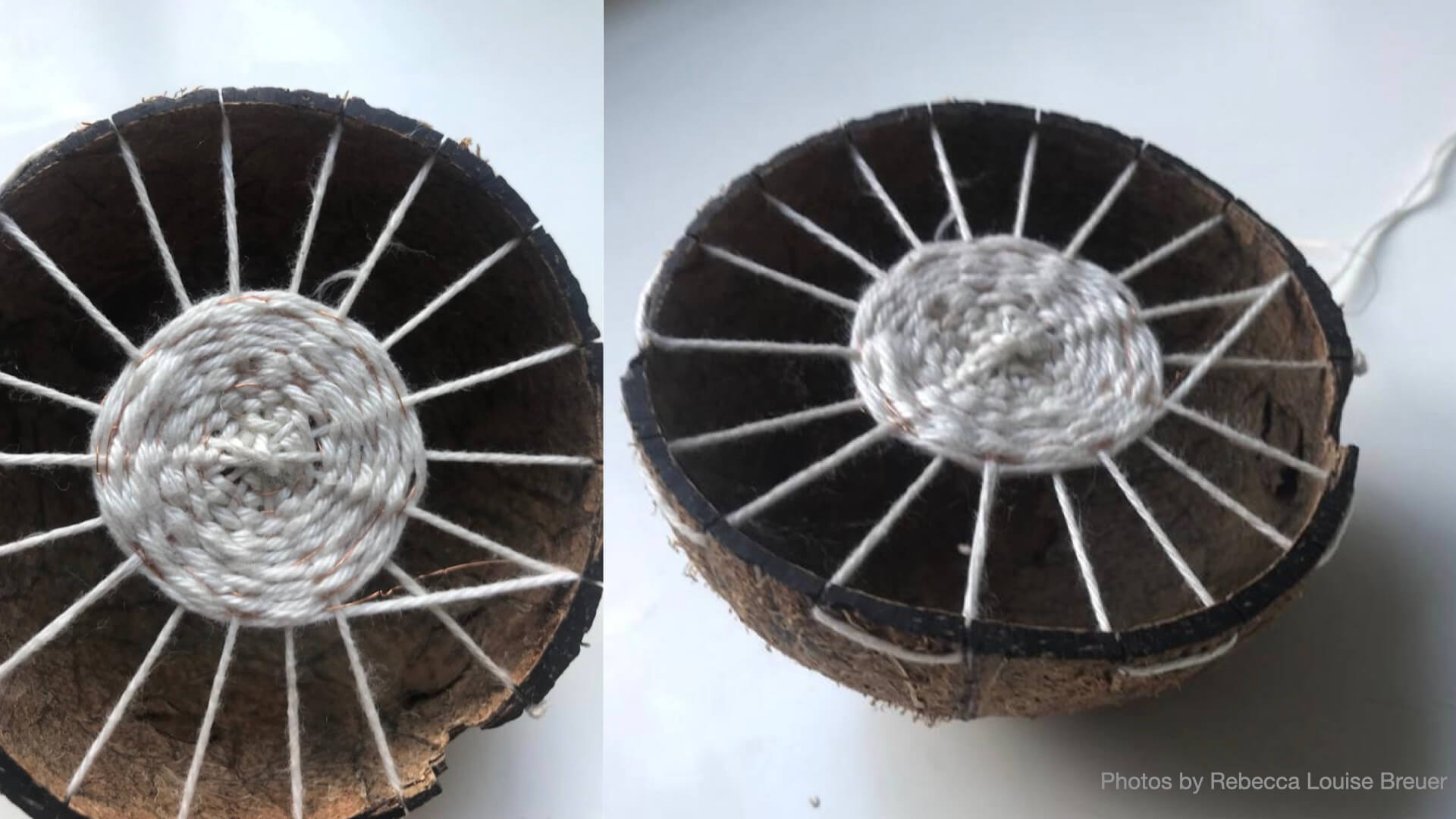

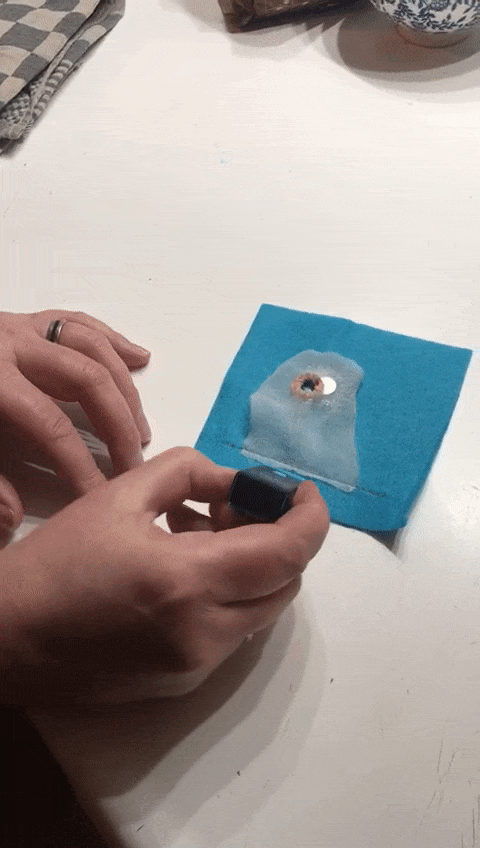
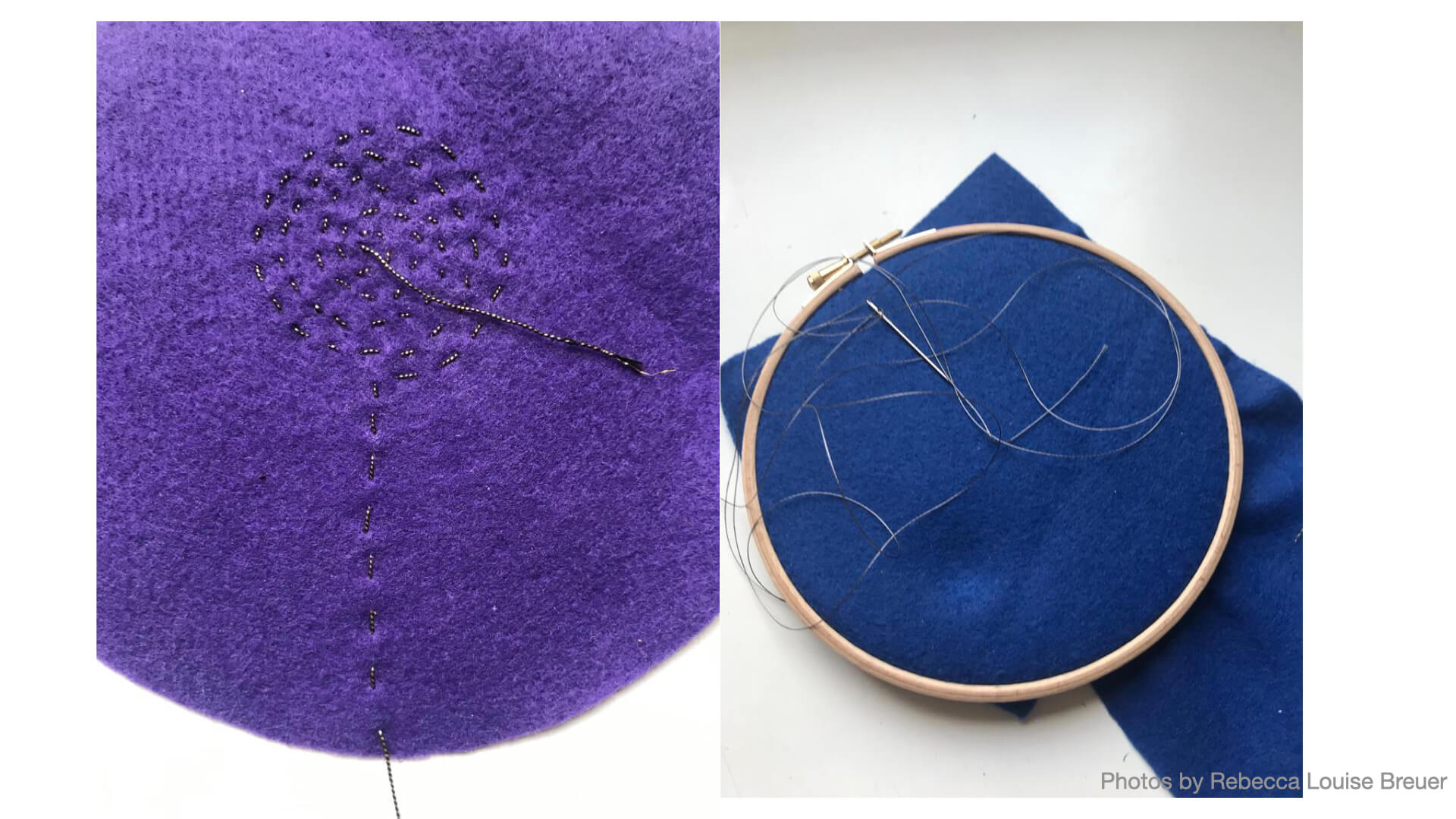
Inspiration¶
There are so many interesting projects, possibilities and technologies to explore, I can only begin to mention some ideas that have my attention and that I find inspiring. And although not solely, or defined as, wearables, I love the work of Dutch artist and designer Bart Hess. He works with the body in many different manners, which I find truly inspiring. Looking at his projects makes me want to do some more art work myself
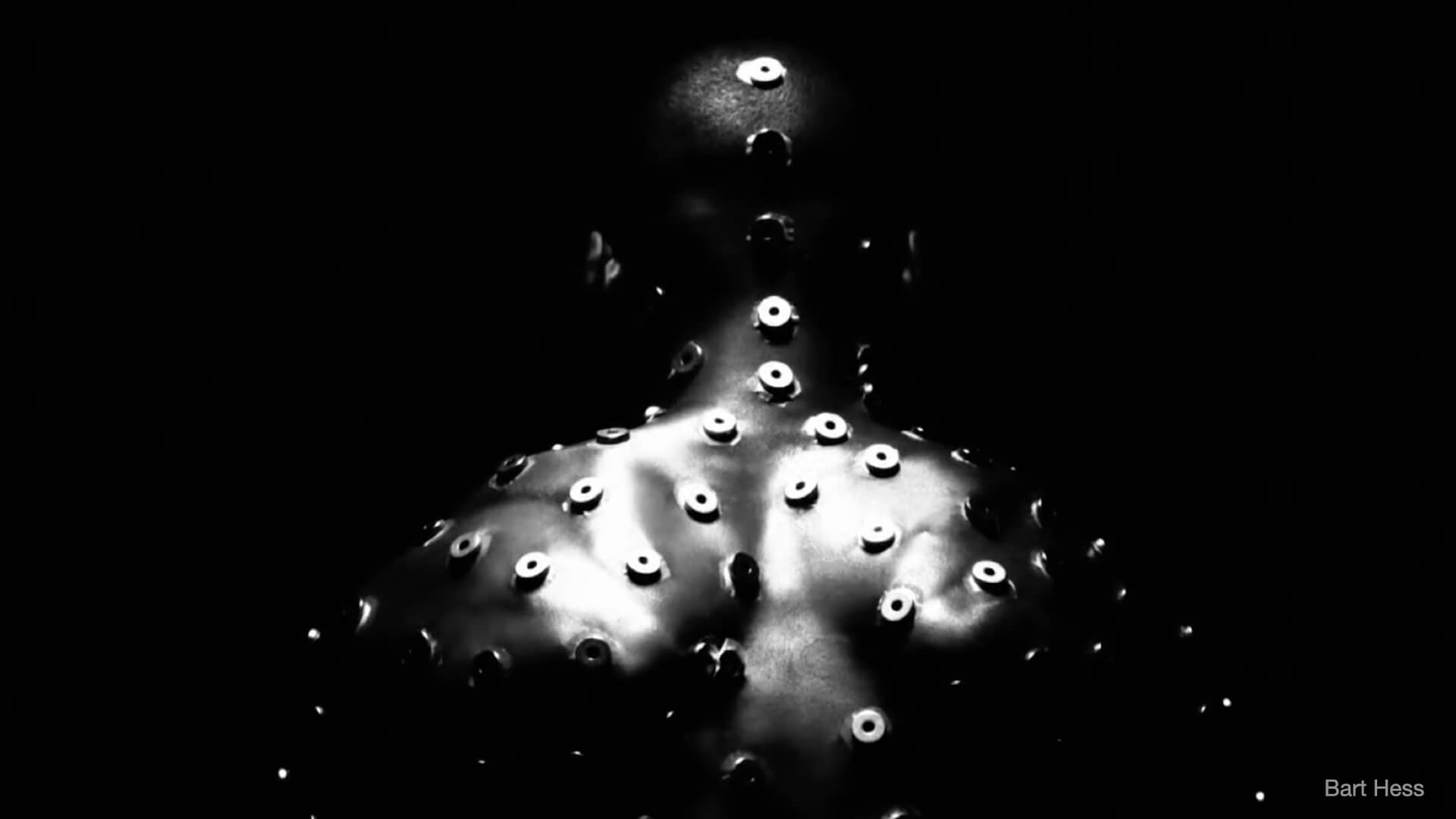
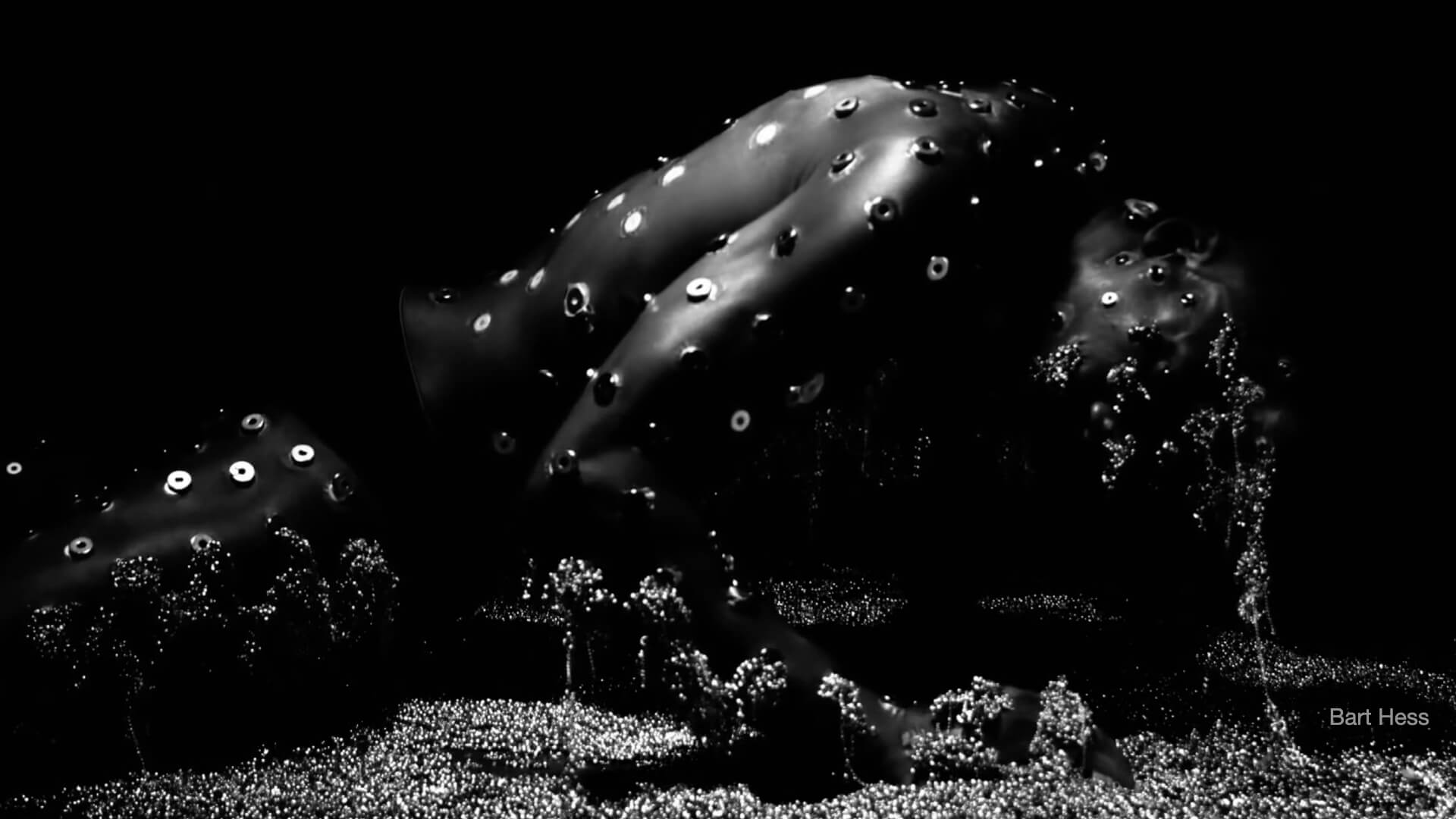
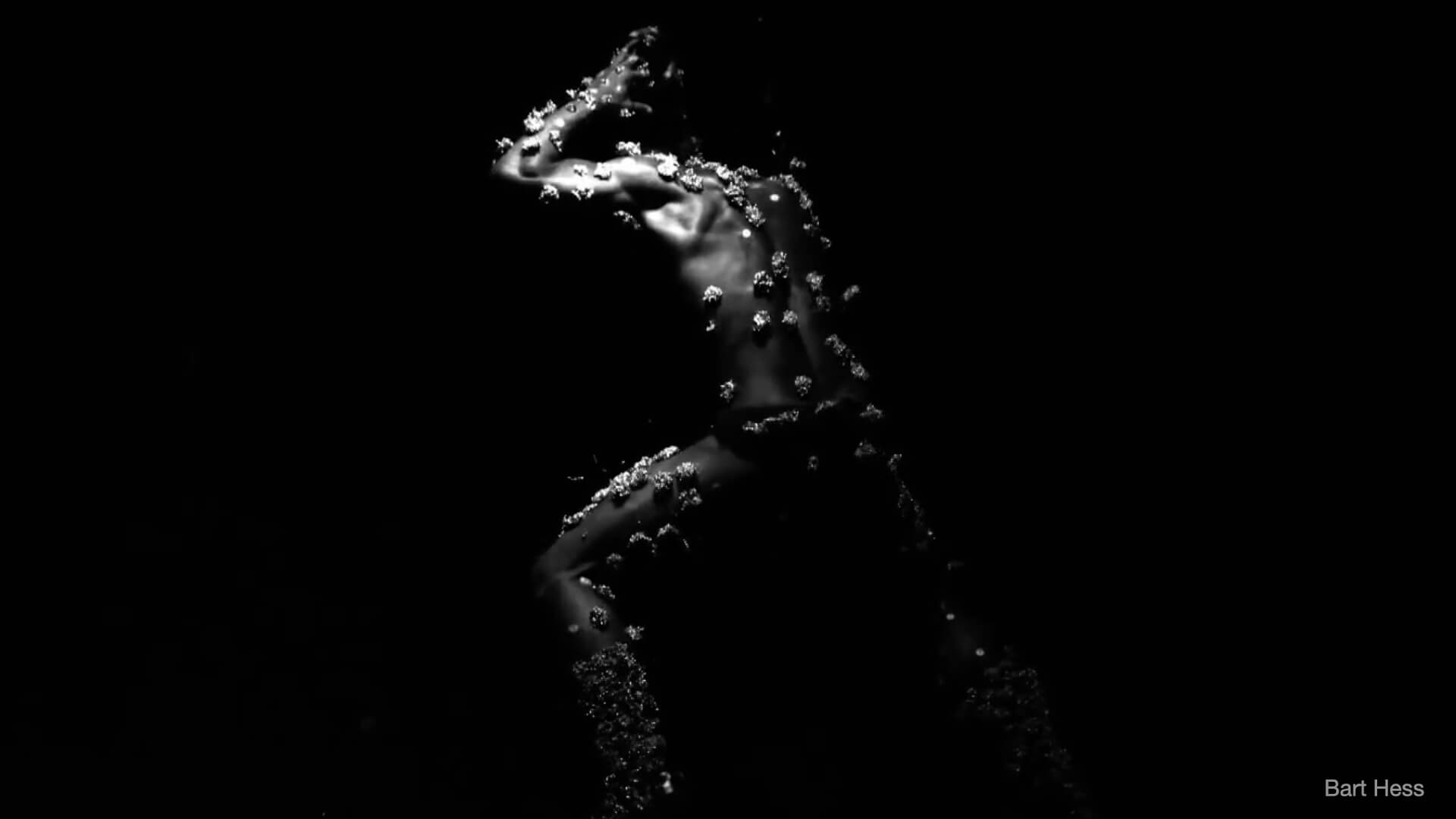
Bart Hess - Pins and Needles

Bart Hess - Stimulus
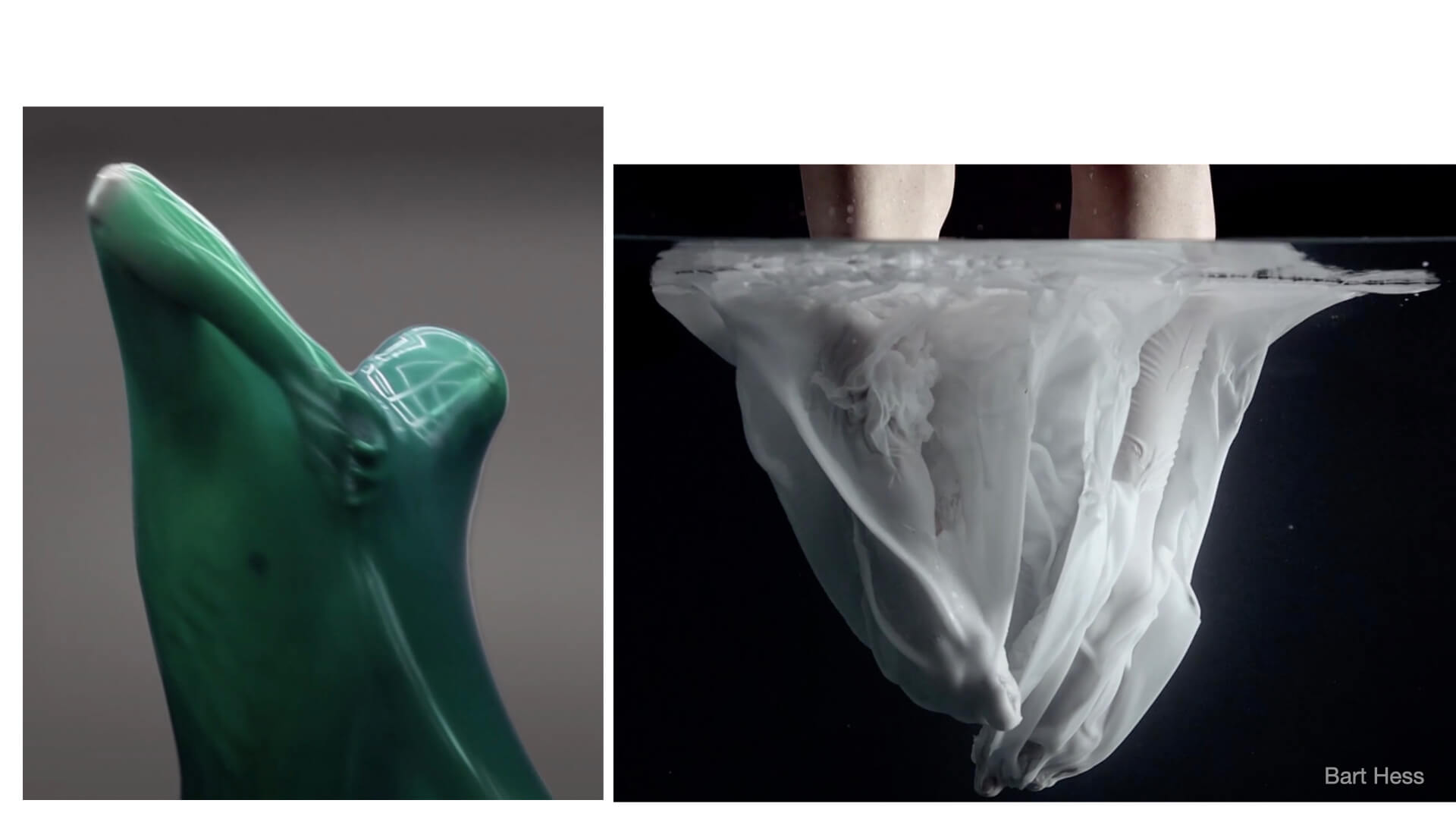
Bart Hess - Mutants and Digital Artefacts
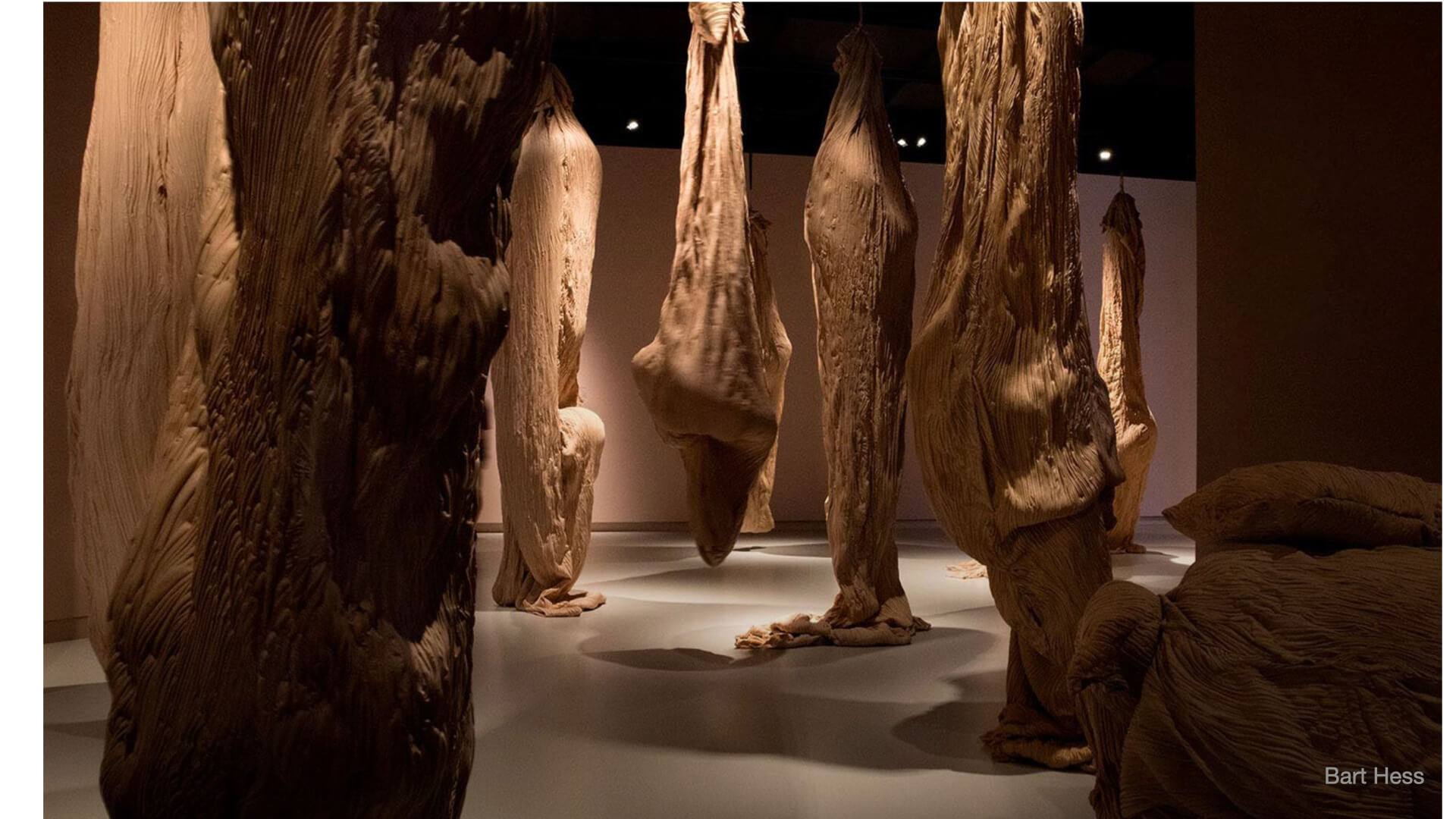
Bart Hess - Grotto. This reminds me of my performances but than in a more masculine manner perhaps

Bart Hess - Caged
The Embodisuit (below) by Sophia Brueckner and Rachel Freire also inspires me. The multiple ways in which connections can be made, inspire my thinking about new possibilities, new experiences and new sensations. The suit also provokes concerns about data-collections and privacy, some issues that have my serious attention.
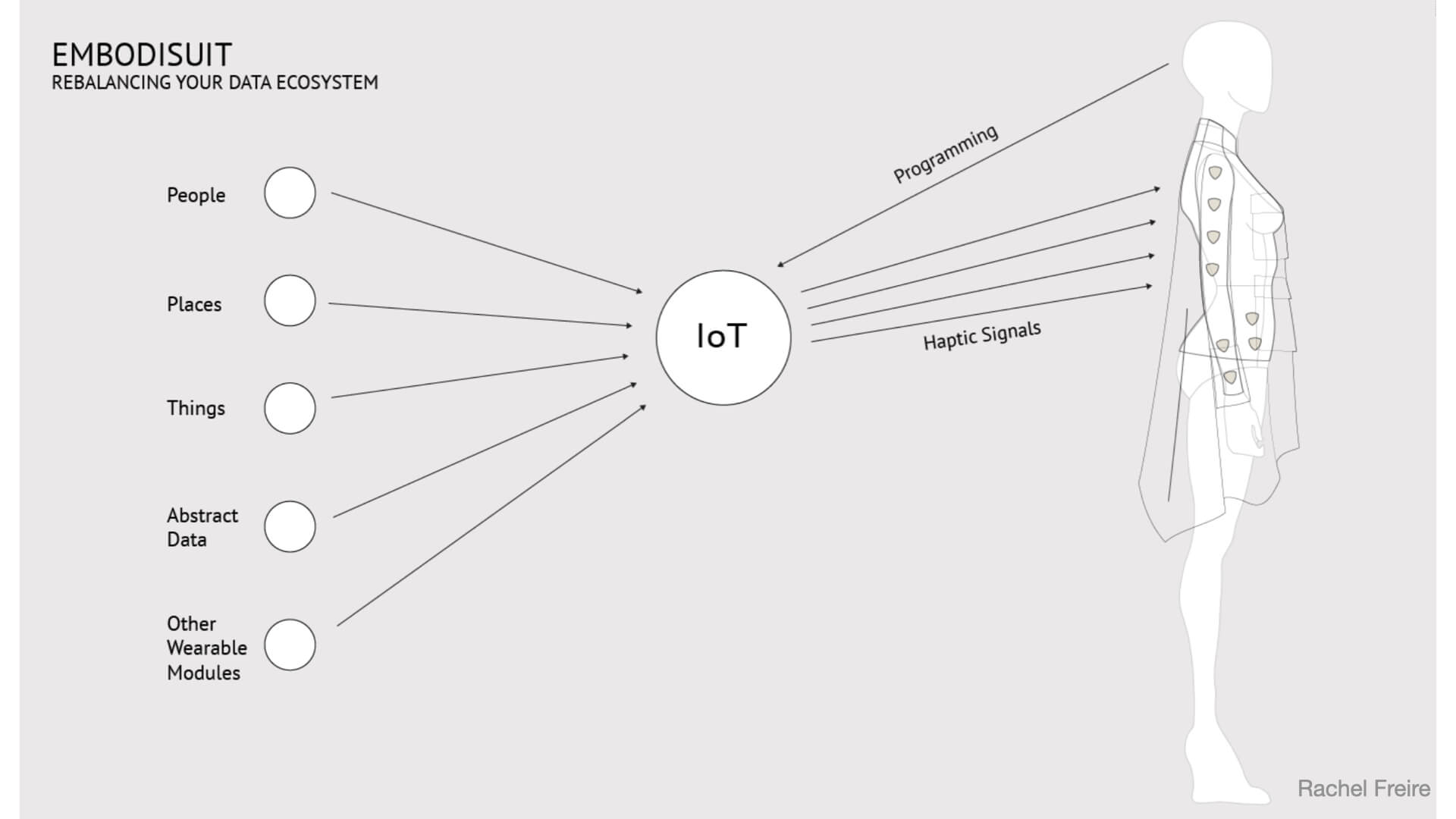
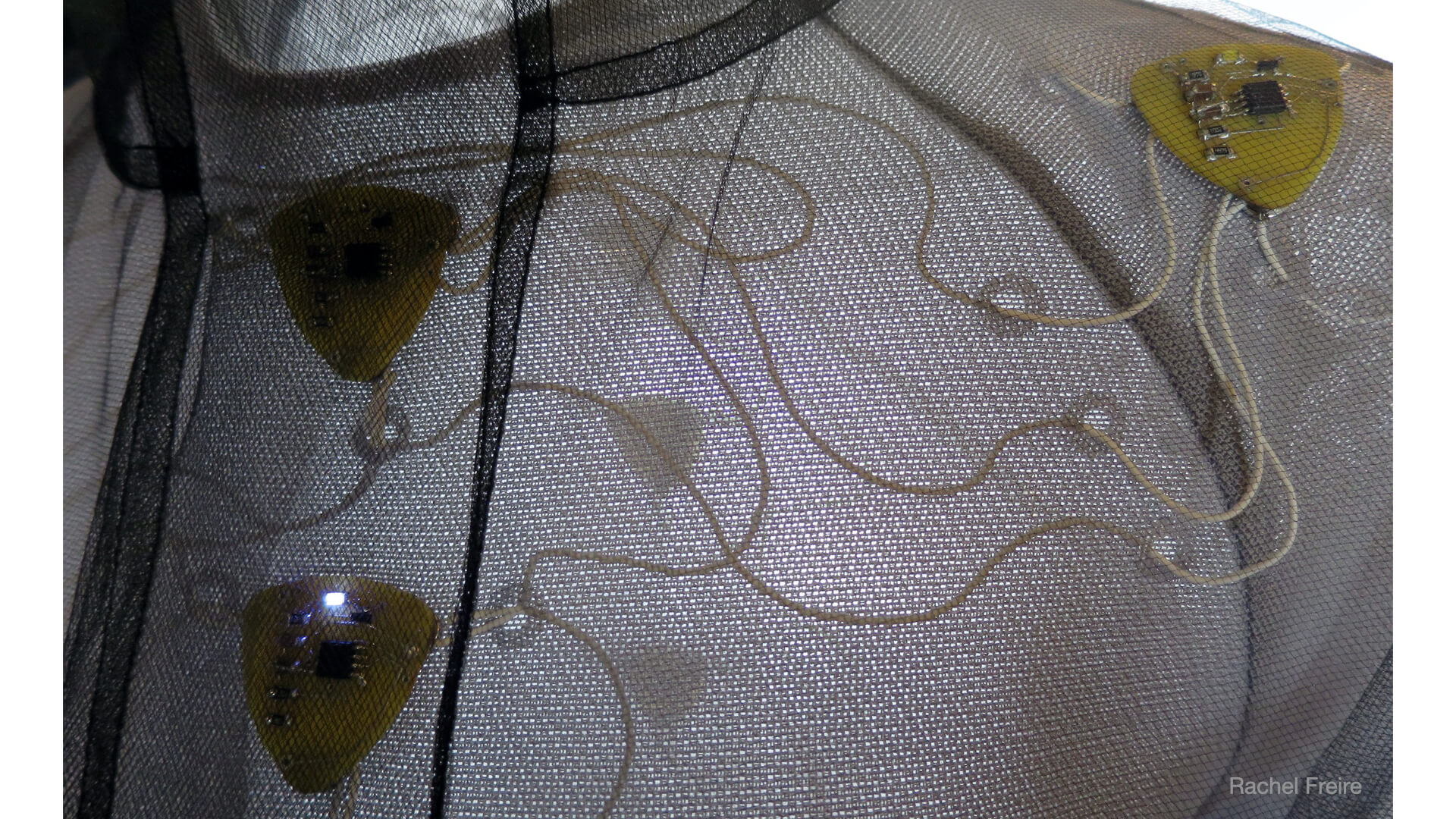
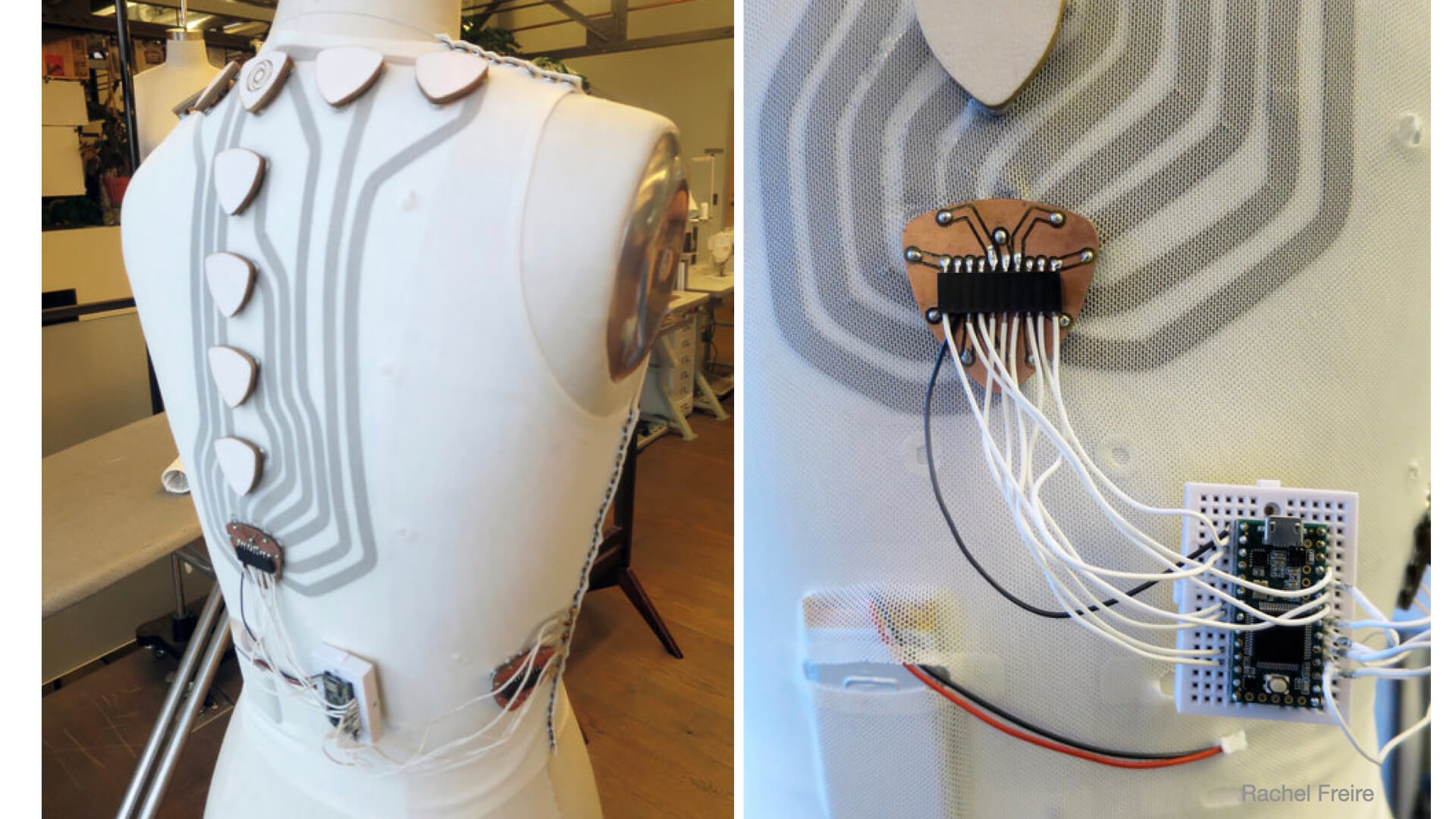
I would love to wear the Wearablex yogapants to experience what the technology does in connection with the body, which sensations it provokes and to which other ideas they may lead. From my experiences with testing the Lumo lift posture corrector, I would, however, definitely study its small print paying close attention whether my movements are also stored and analysed by Wearablex. Lumo did so and sold 'millions of hours of movement data' to a larger smart garment company.
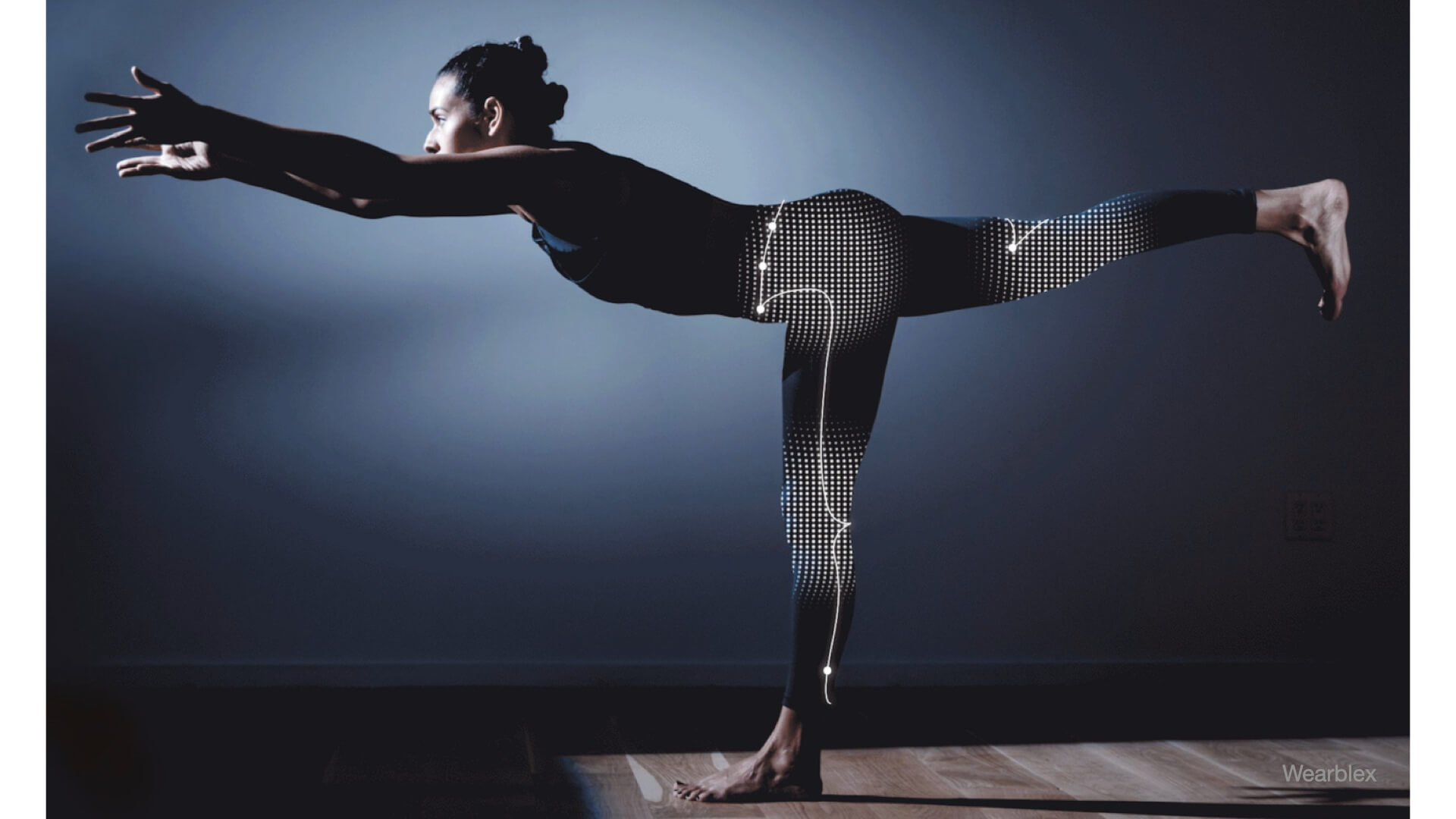
This little artificial muscle, see below, I also find cute. I would like to experiment with its life-like character, rather than developing it further for medical purposes. It reminds me of a little creature that breaths. See it doing so here
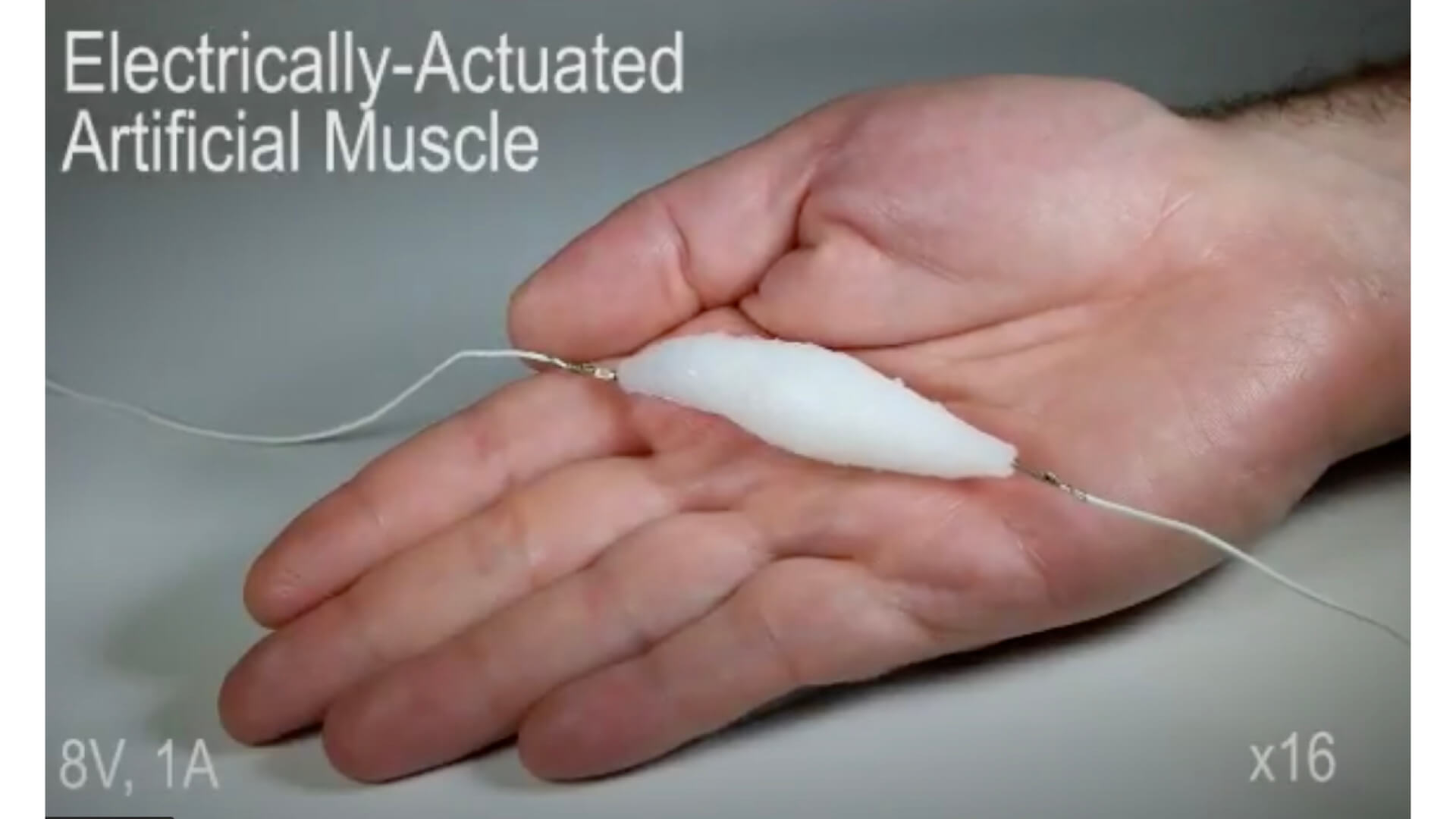
The 'little creature cuteness' is also a factor in the Tactile Dialogues project by Martijn Böhmer below. Designed to envoke a dialogue with, for instance, people suffering from dementia. This project opens up a perspective upon the limitless future potential of techtile integrated terchnologies.
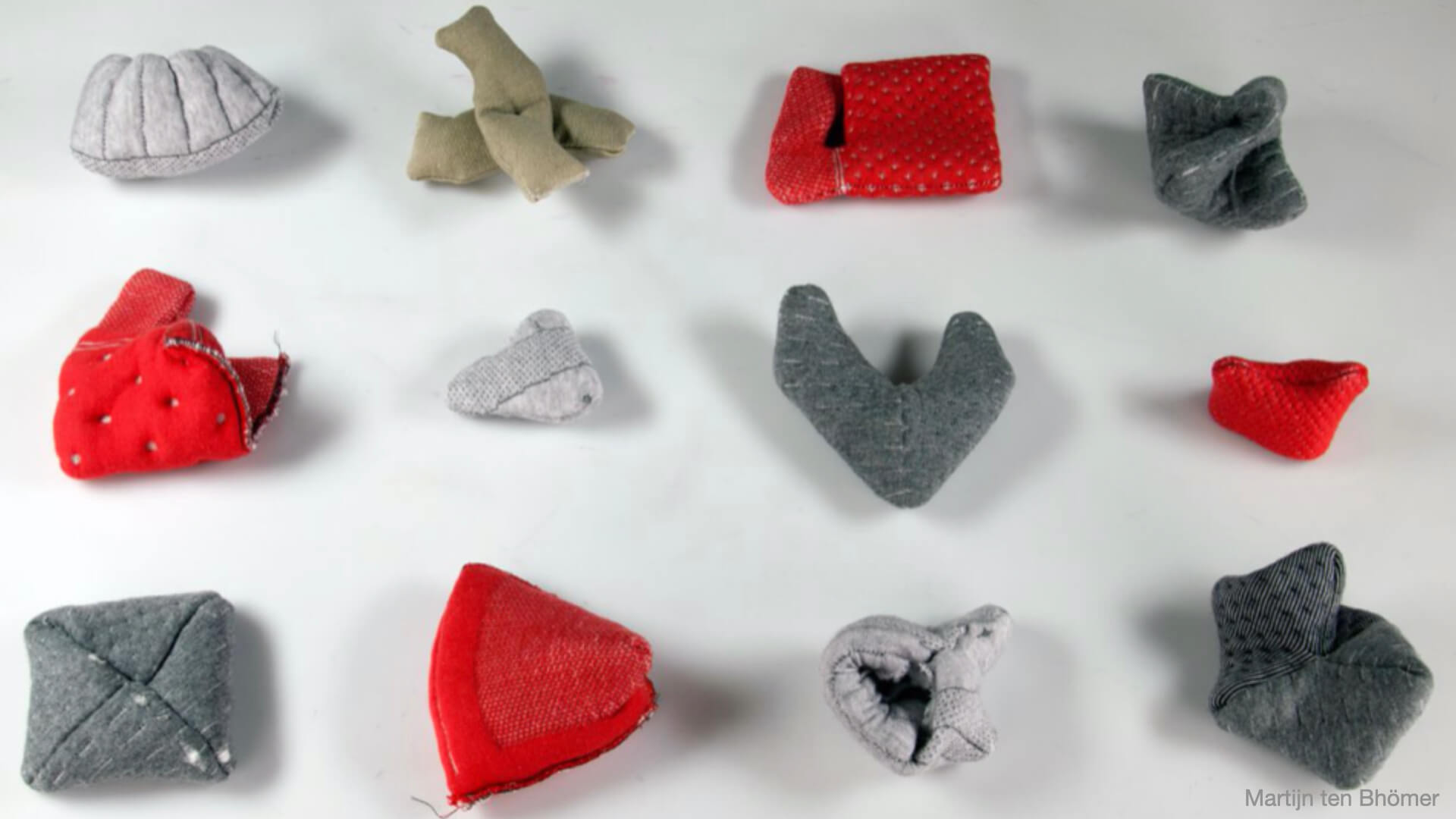
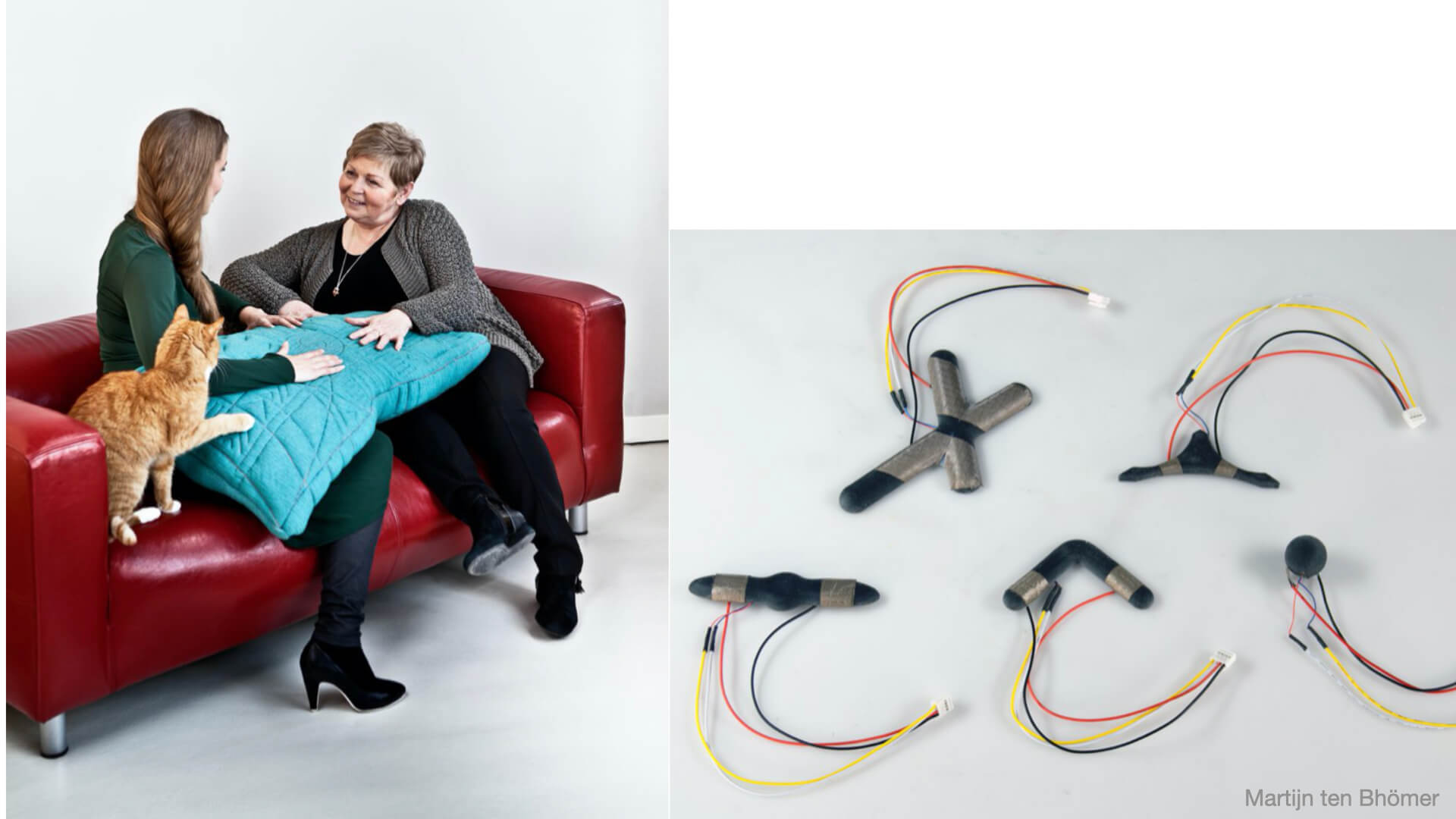
I haven't yet looked into thermocromic paints, but perhaps will do so in the future. I am a little concerned about its chemical components, particularly since these fabrics have become more widely available as the products from Sea'sons, a strat-up by yound Dutch entrpreneur Tom van Dieren (below) shows.
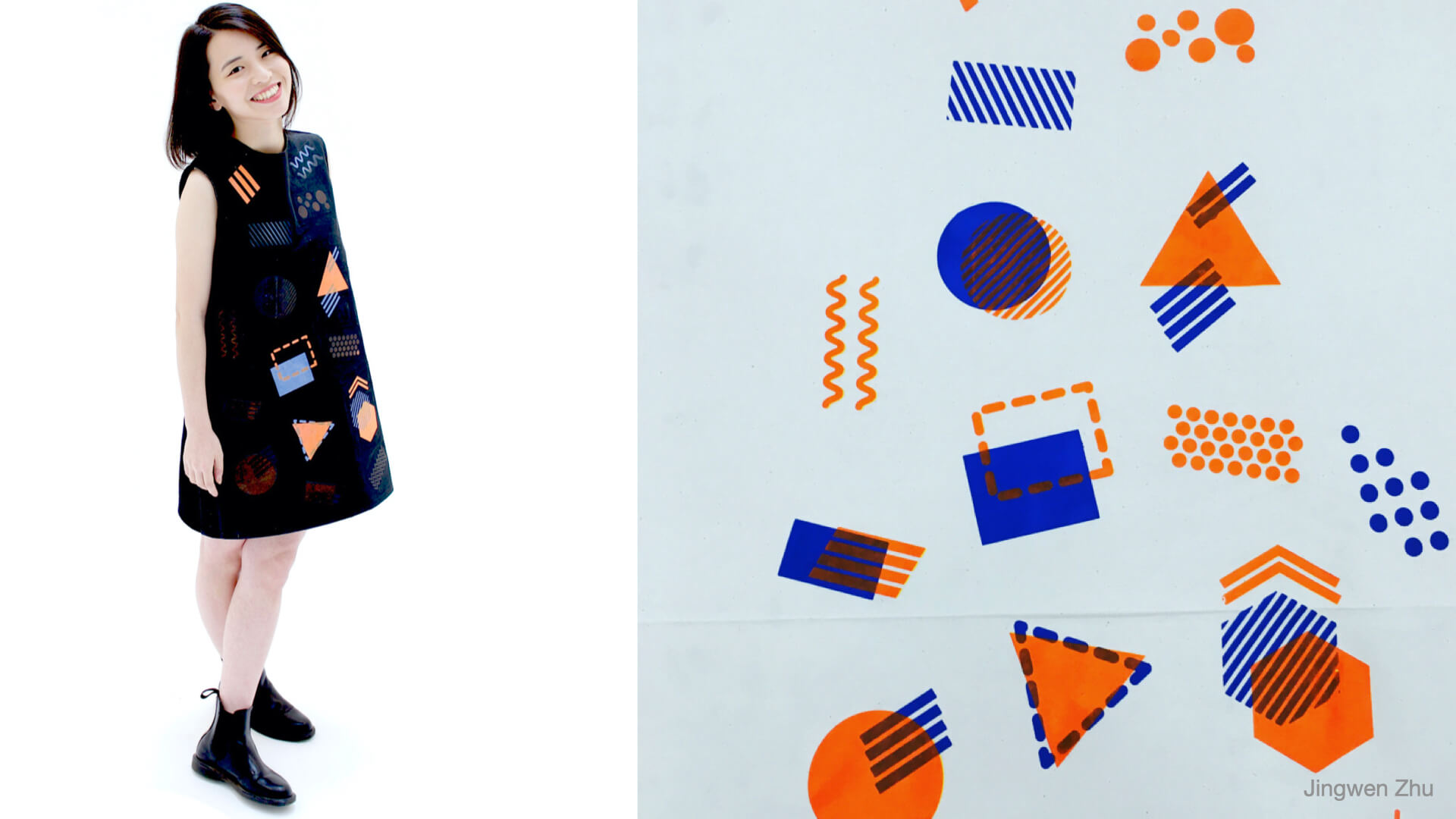

Last but not least, the incredible speakers by Jess Roland. I'm not sure whether I want to further explore sound in the future, but these works show that there's a whole world of sound to explore out there.
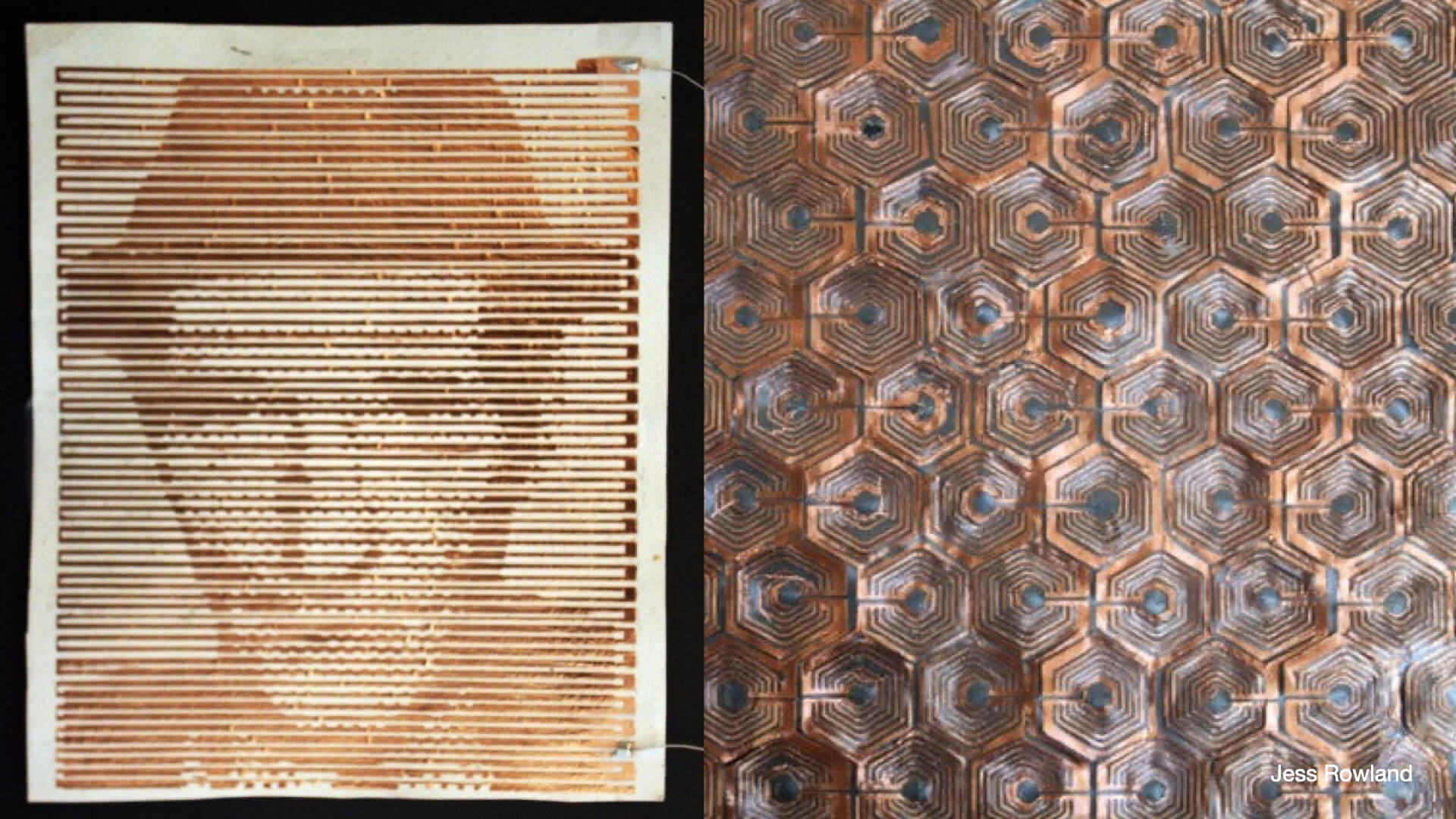

Research¶
Documentation¶
Coconut Speaker
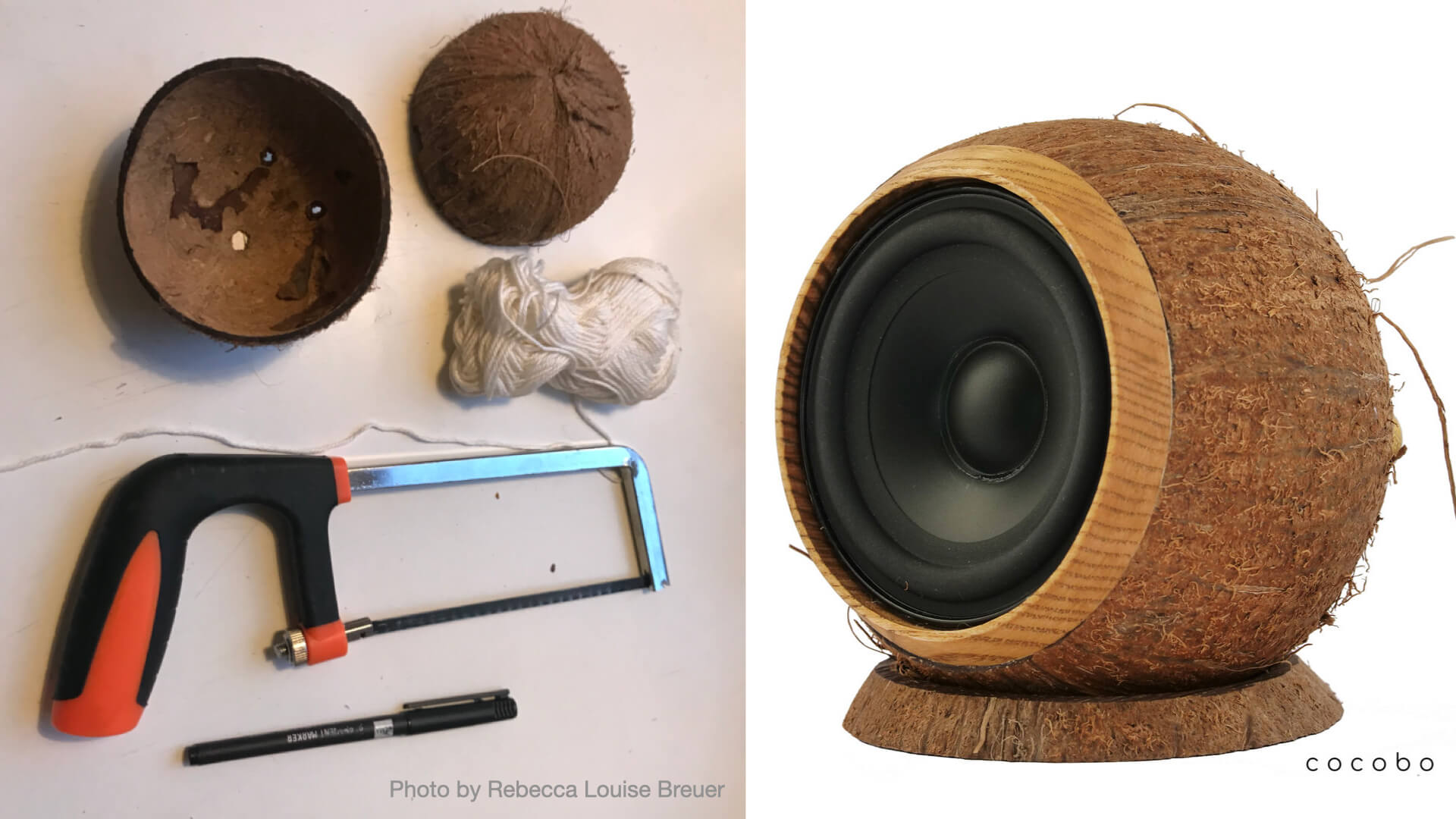
You can buy ready made coconut speakers online, but why not make one yourself? Cecilia showed the (for me unaesthetic) speaker made from a paper cup and said we could use anything that acts like a container, a coconut if we please. Later that day, when grocery shopping I came across the section with coconuts and decided to try using the coconut to make a speaker out of it.
You will need:
- a coconut
- a saw with a thin blade
- cotton or other thread
- a marker
- copper thread

After sawing the coconut in half and taking out the white flesh, I washed and dried the halfs in the sun for a while. Using a saw with a soft blade, I tested whether a slit would hold a tread in a durable manner. It did.
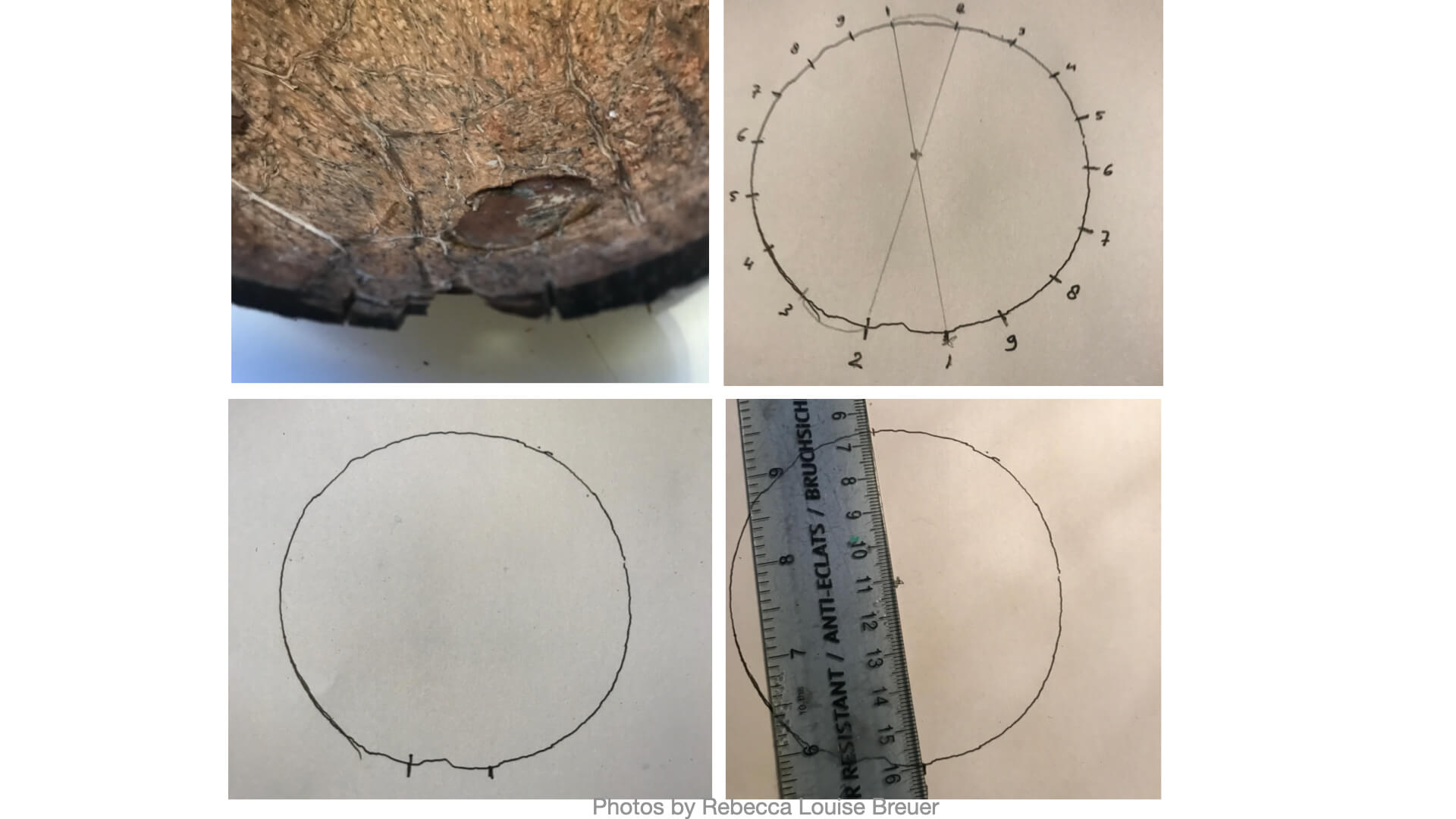
Since my coconut had a weak spot, I decided to work around this and spaced the slits accordingly. I traced the half and created an even spacing on paper first, which I then copied onto the coconut half (see the image on left below).

Moving from slit to slit create a star shaped design for weaving.

The start of the copper wire, which is in the center of the coil, extends to the other end of the nut and comes out a hole I drilled in the bottom of the half. I attached a press stud to the wire, seemed handy for future use. I, furthermore, alternated the cotton with the copper to create a woven speaker.
Flapper
On Kobakant I found a swatch example for a flapping wing, which seemed a fun to make technique for creating movement.
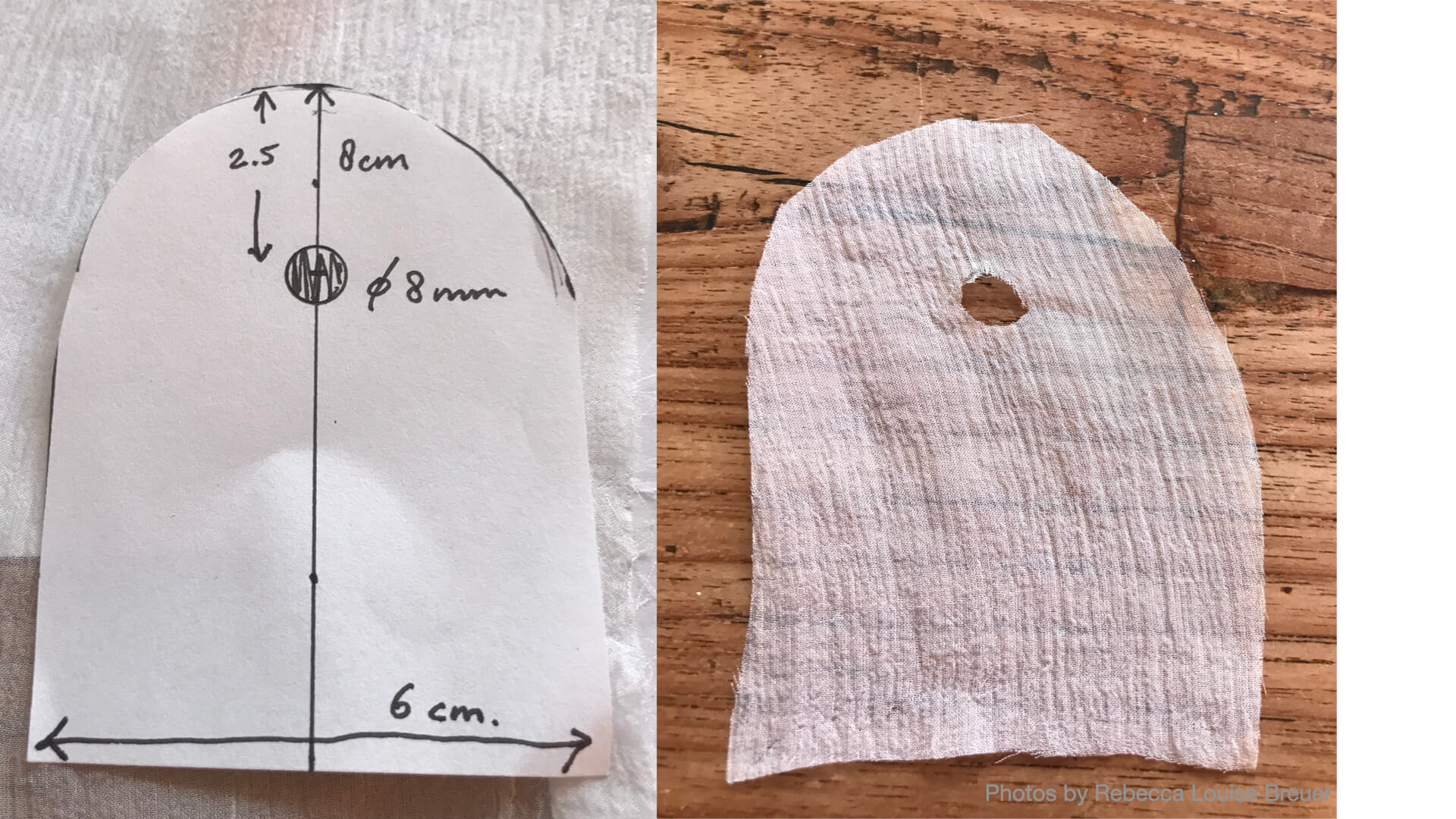
First, I created a pattern for the wing in paper. This I cut out of a piece of silk, making a hole for attaching the coil made of coated copper wire (about 100 times).
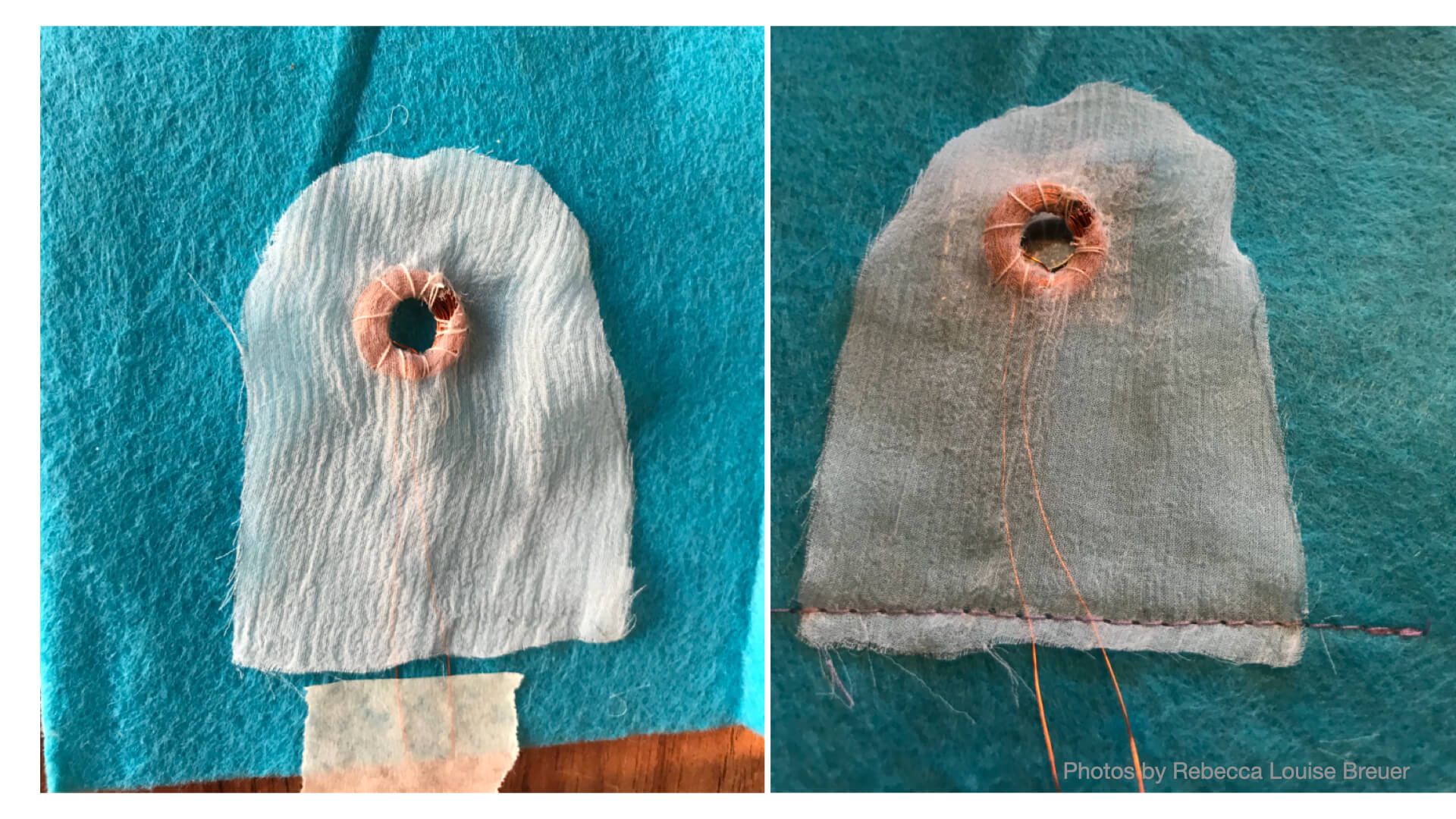
I attached the coil to the silk and the ensemble to the base fabric. I used teak wool felt.
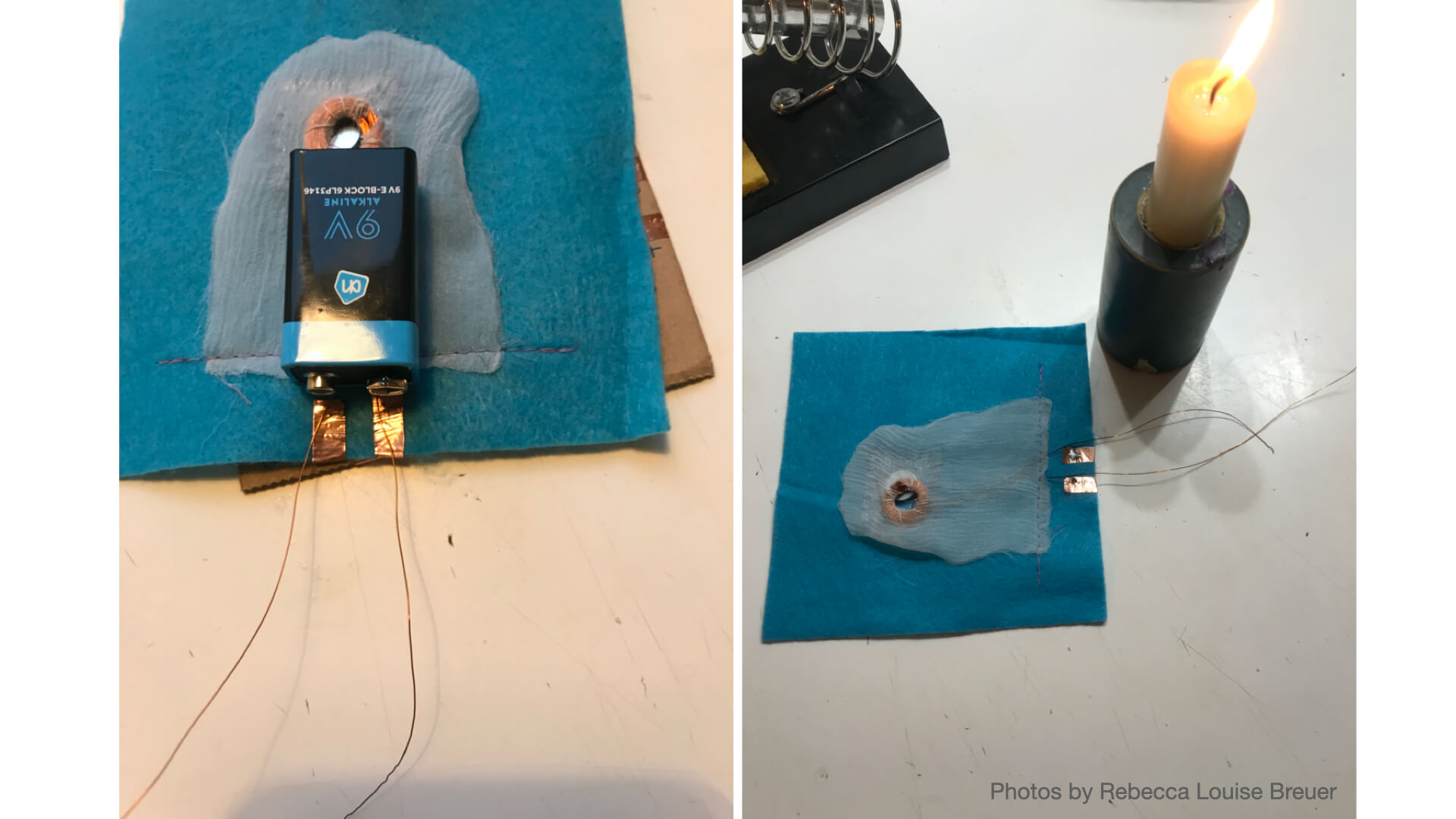
Using a battery for the right spacing, I attached some copper tape to the base. When the threads proved hard to solder, I realised I hadn't removed the coating. I used a candle to burn it off. Cleaned the now black wires with some alcohol and soldered to the copper tape.

By simply putting the battery on the two poles of the swatch the flapper wing will either be drawn to the magnet or pushed away. Alternate the + and - of the battery to have a moving effect.
Putting Soft Speakers to Work
It works! I've never been so excited to hear a beep in my life, I think. Just after two on Tuesday, I managed to use a strong magnet, the Arduino sketch and both the purple soft speaker as well as the coconut produced a beep of one second, a silence and a beep again, and again, and again. The soft speaker was much fainter than the coconut. The latter was rerally load. Guess I now have to get unto Youtube to provide some proof. Will do so a.s.a.p.
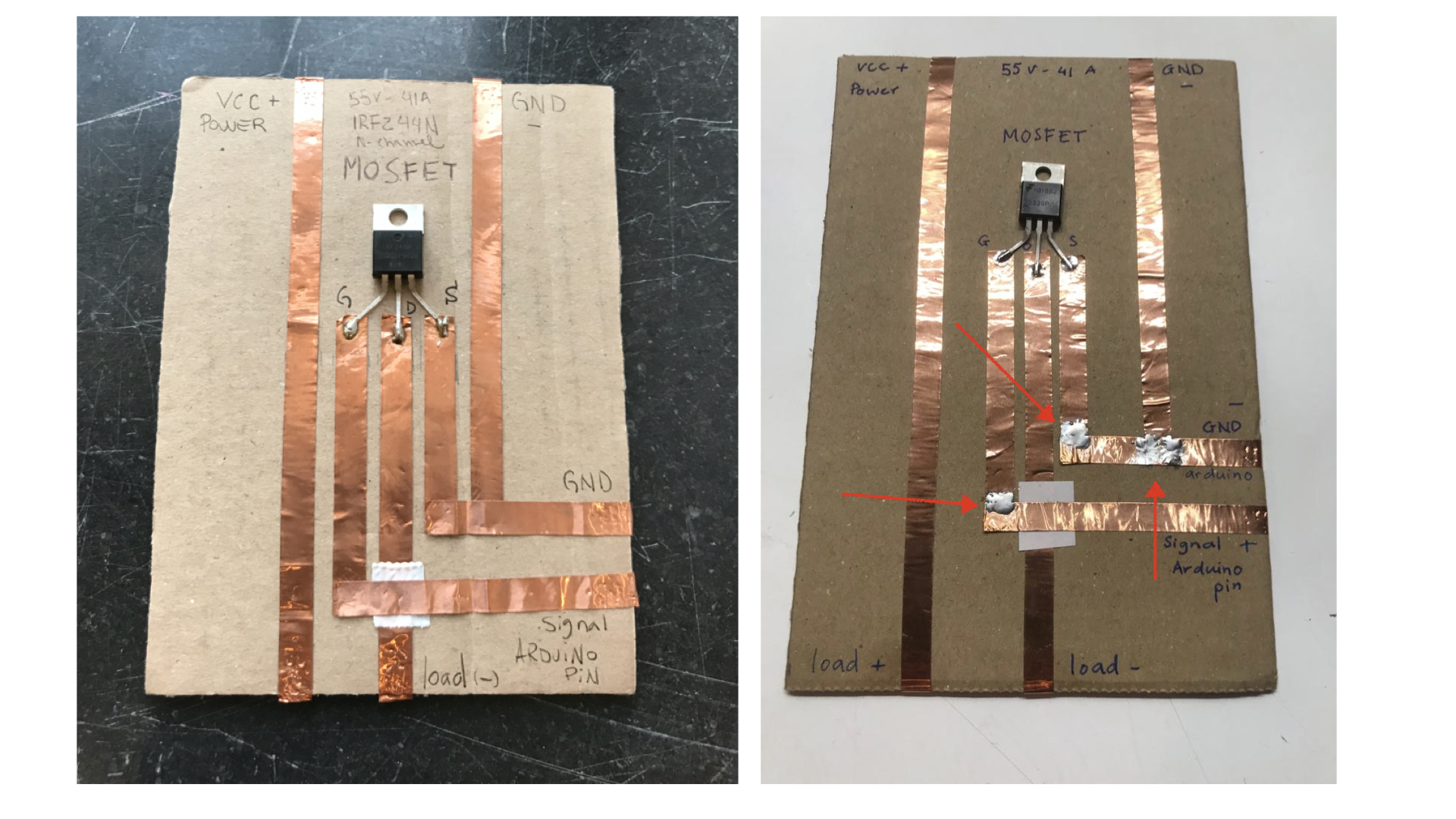
The load needed some solder, I found out yesterday. Apparantly the glue under the copper tape disabled a good connection.

I changed Emma's Arduino sketch to a pin 3 and connected my laptop extension to the second, lower, poart of my laptop. The first one seems to be for power only, or, at least, has been troublesome with the Arduino
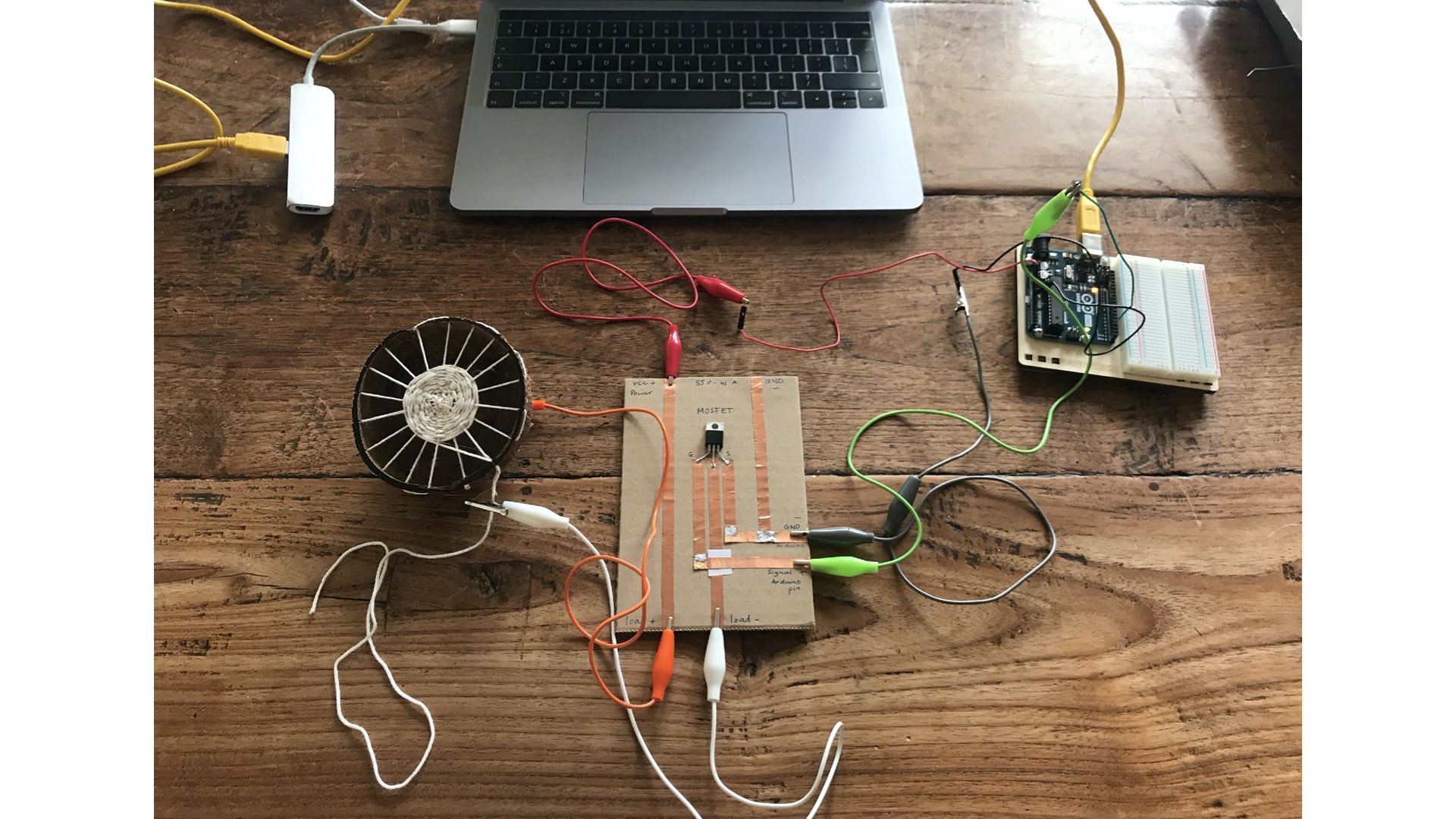
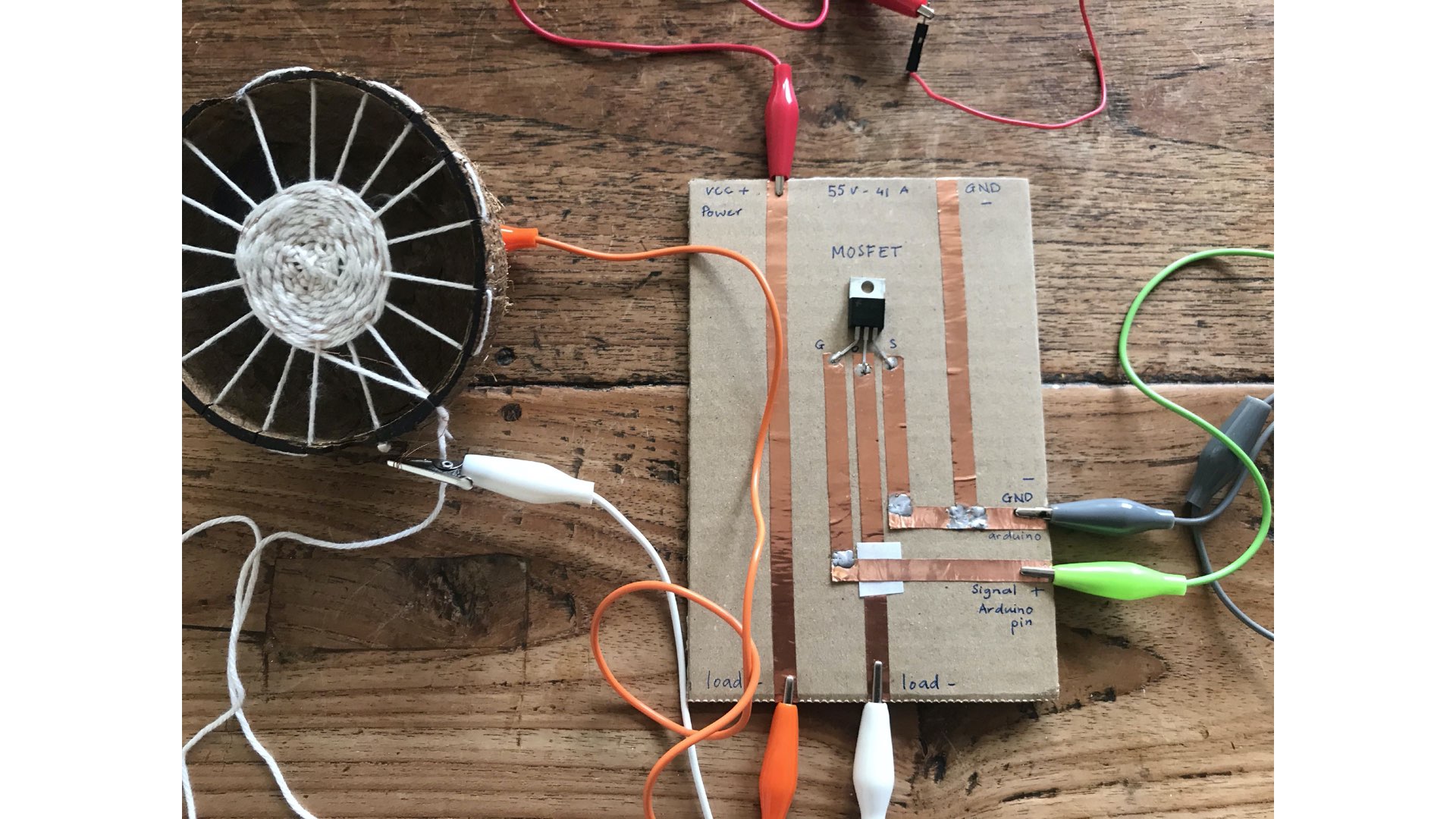
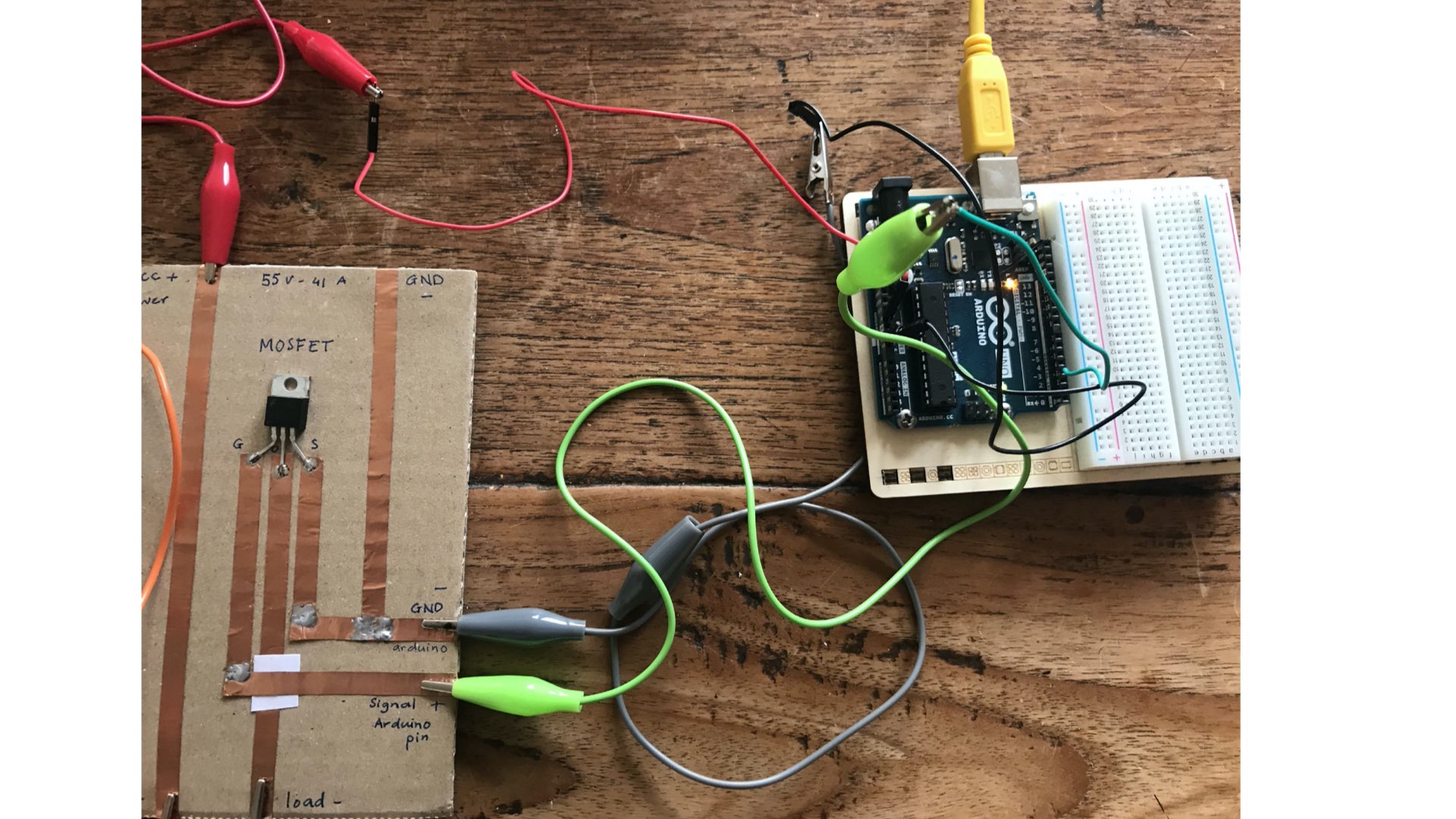

Lecture and Tutorials¶
During her lecture on Tuesday Liza Stark talked about wearables. This topic has my interest because I would like to reflect upon the relation between technology, more specifically actuators and the felt-body perception.
Liza Gave plenty of advice and one of the first things she discussed was to think about the application. For my purpose I think the ‘proof of concept’ is the most important one. I’d like to experiment with different manners of how wearable technology can communicate with the body. For this week’s projects, which are of course relatively small, I’m therefore not that interested in light, but the impact of sound and motion in relation to a direct communication with the body of the wearer have my attention.
A few important things to think about, apart from the application, that Liza mentioned were:
- Durability
- Wearability
- Washability
- Power
- Circuit layout
- Privacy
- Sustainability
As towards the latter, I think I’m interested which new experiences may cause people to cherish the relation they have with what they wear differently. In addition to Liza’s list, I would, for now, add:
- Experience
- Sensation
- Perception
- Vocabulary

The lecture was all about actuators, technology that changes state, and was focused around visual, sound and motion. Although I don’t want to discard the idea of light and wearables altogether, it doesn’t have my preference. Partly out of gut feeling this isn’t the most promising path to go, partly because of my interest in the communication between technology and the body. I will, therefore, mainly concentrate on motion in my notes.
MOTION
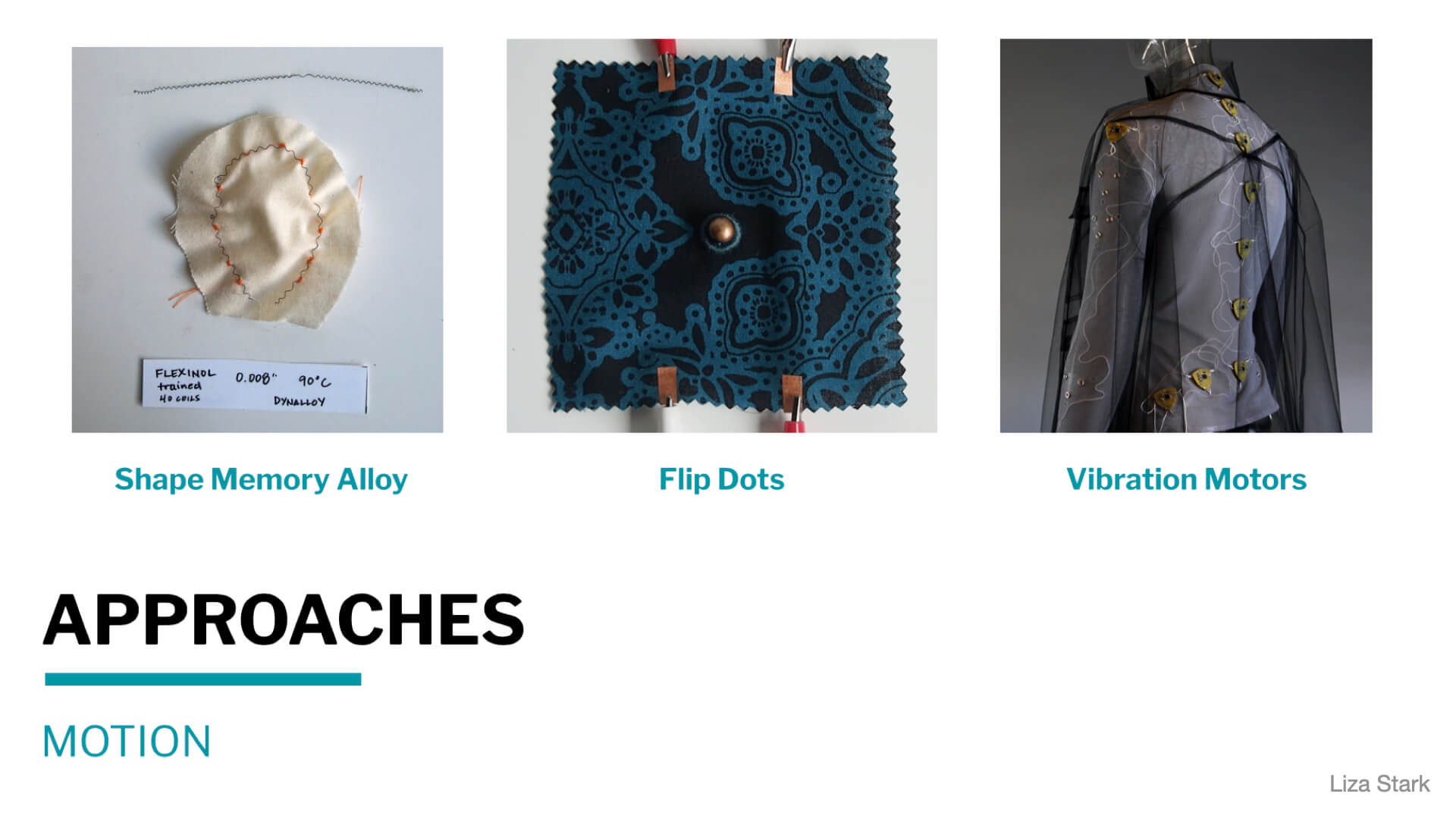
Liza discussed three different technologies that are motion based:
1. Shape memory alloys, which move in an organic and slow manner
2. The flip-dot, which is a magnetic bead that flips sides
3. Vibration motors (see 1:30 in the video
Both the shape memory alloys as well as the vibration motor have my main attention. The latter come in two types ERM and LRA and one can find them in 5V, which draws 100mA, and 3V, which draws 60mA of current.
Liza furthermore talked about the ATtiny, but since we later discovered that we won’t be using these this week, I will leave my notes in writing for now, and will reflect upon the deliverables: two actuator swatches for which we use batteries rather than the laptop as a power source.
When working with actuators in the future a good list of external references can be found here.
TRANSISTOR
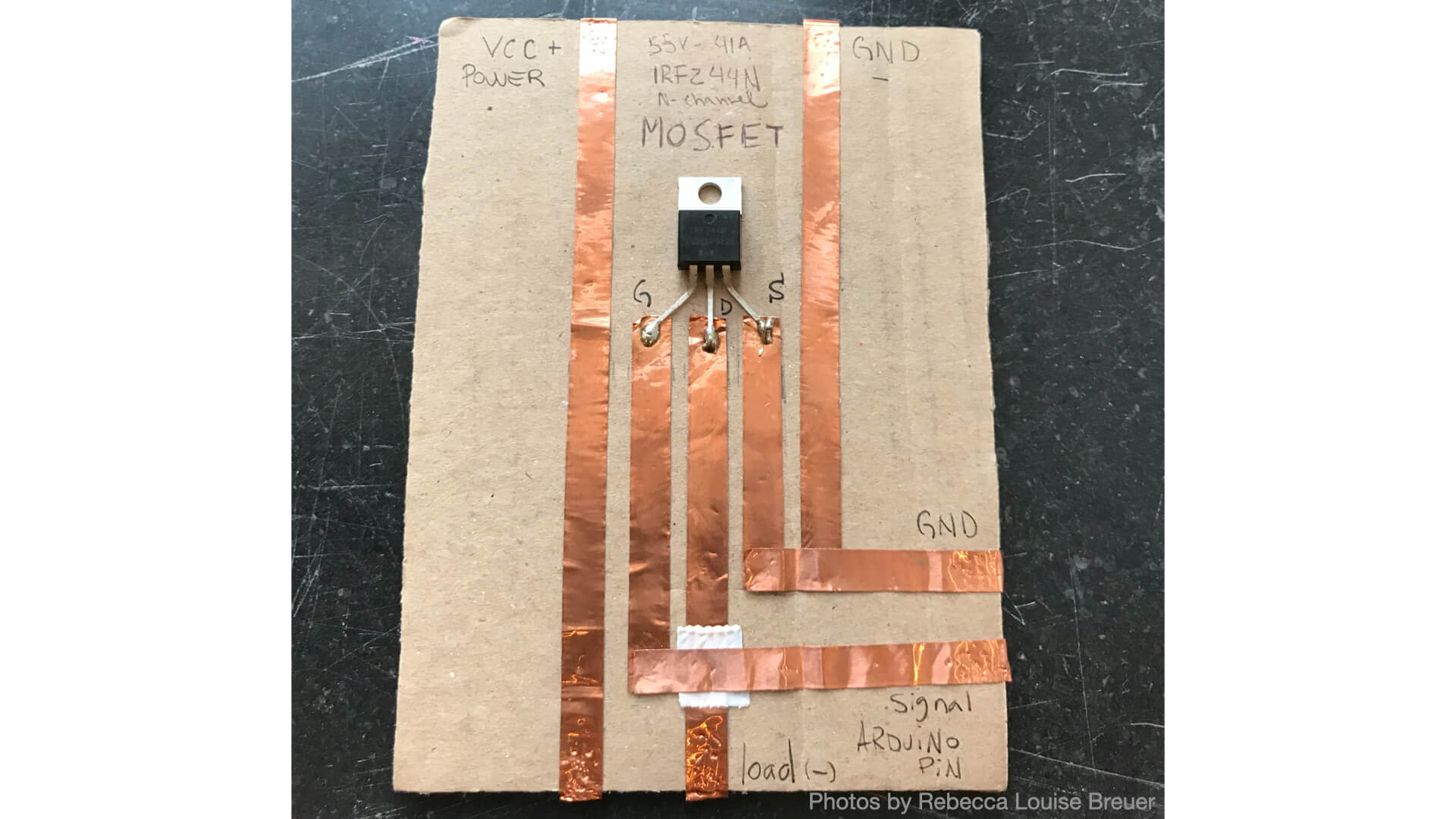
On Wednesday, we built a transistor circuit using a transistor with number 1B18BJ – 75339P, copper tape, cardboard, tape and solder.
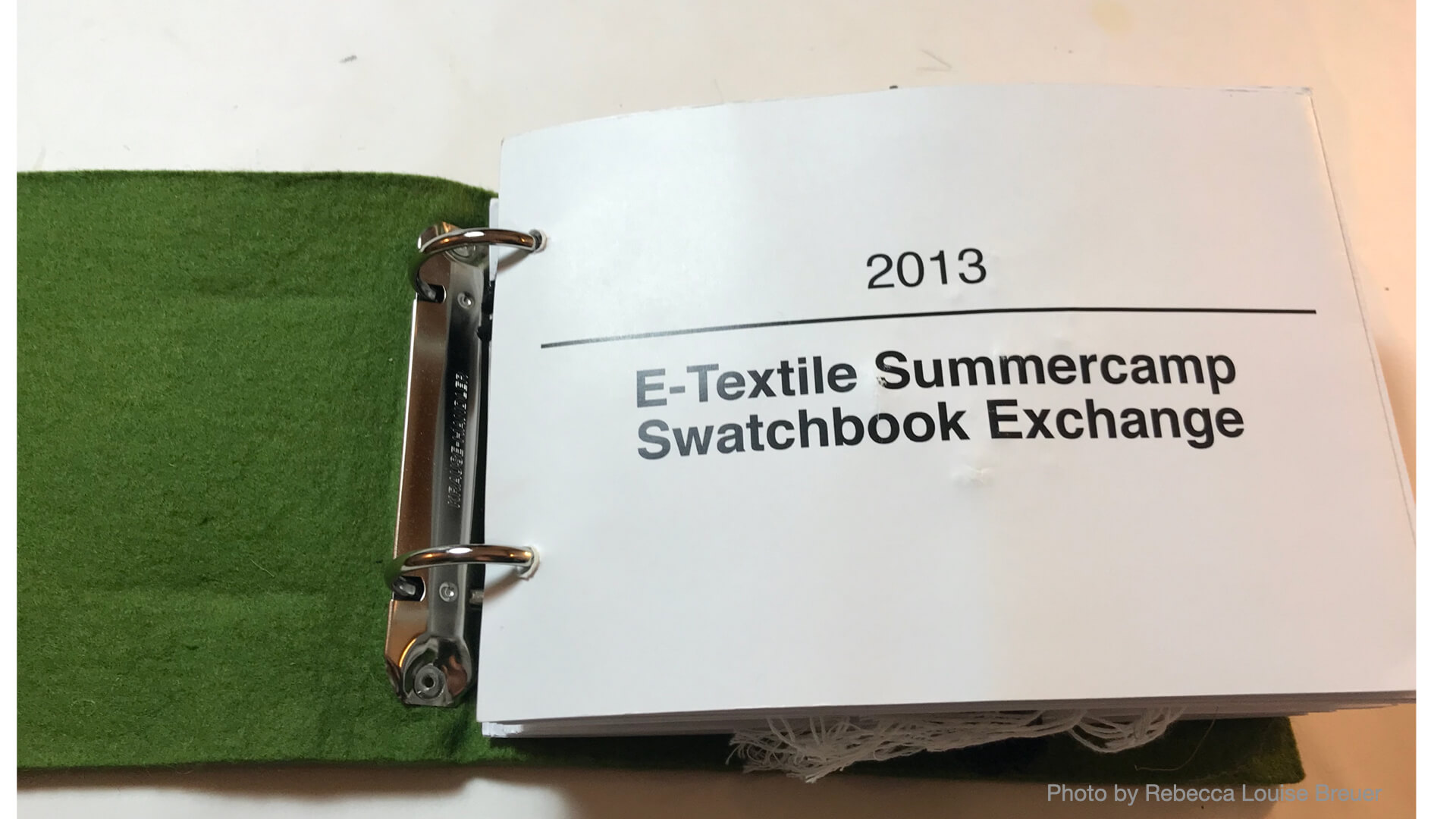
I went to see my friend Anja Hertenberger and we had lunch, discussed ideas and I got to look through the swatch books in her atelier. This was very inspiring and nice, it made me realise I would need to keep my projects small.
On Thursday, Emma’s tutorial was about output devices: actuators and loads and the Arduino. The Pdf she shared with us, as well as the tutorial itself were really clear. The pace was nice and good to follow, really great. Below I have copied some important slides out of her presentation.
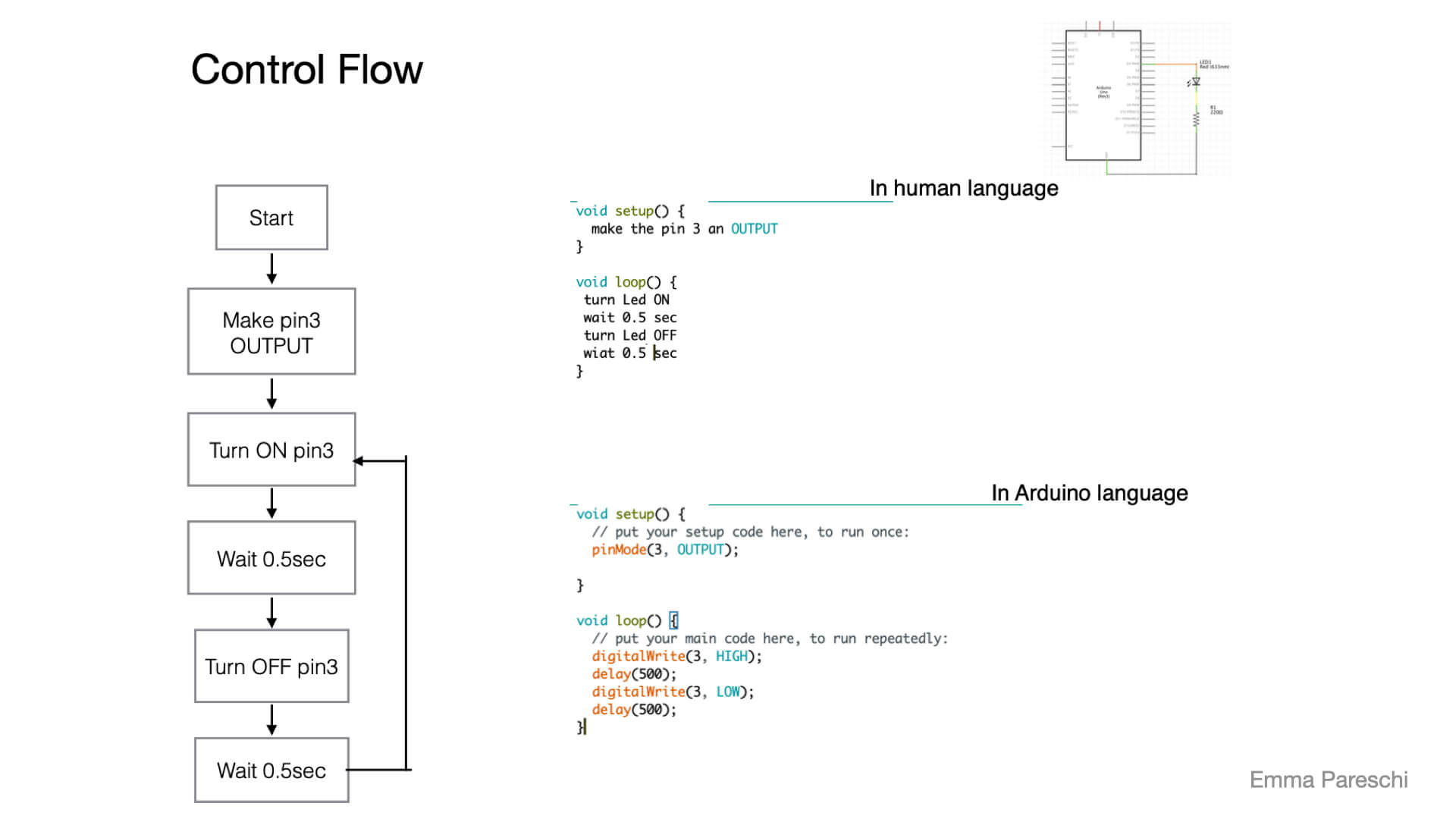

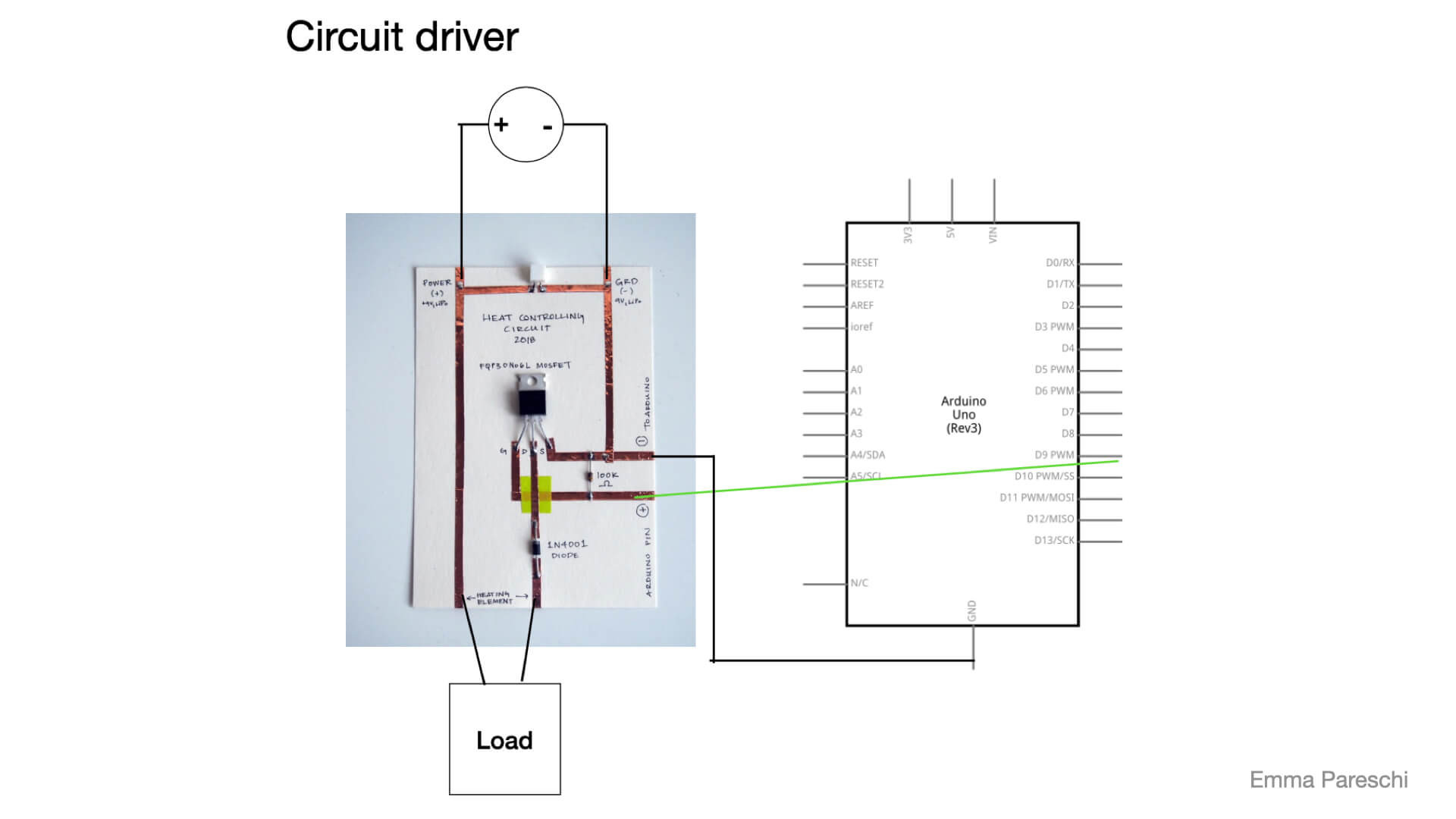
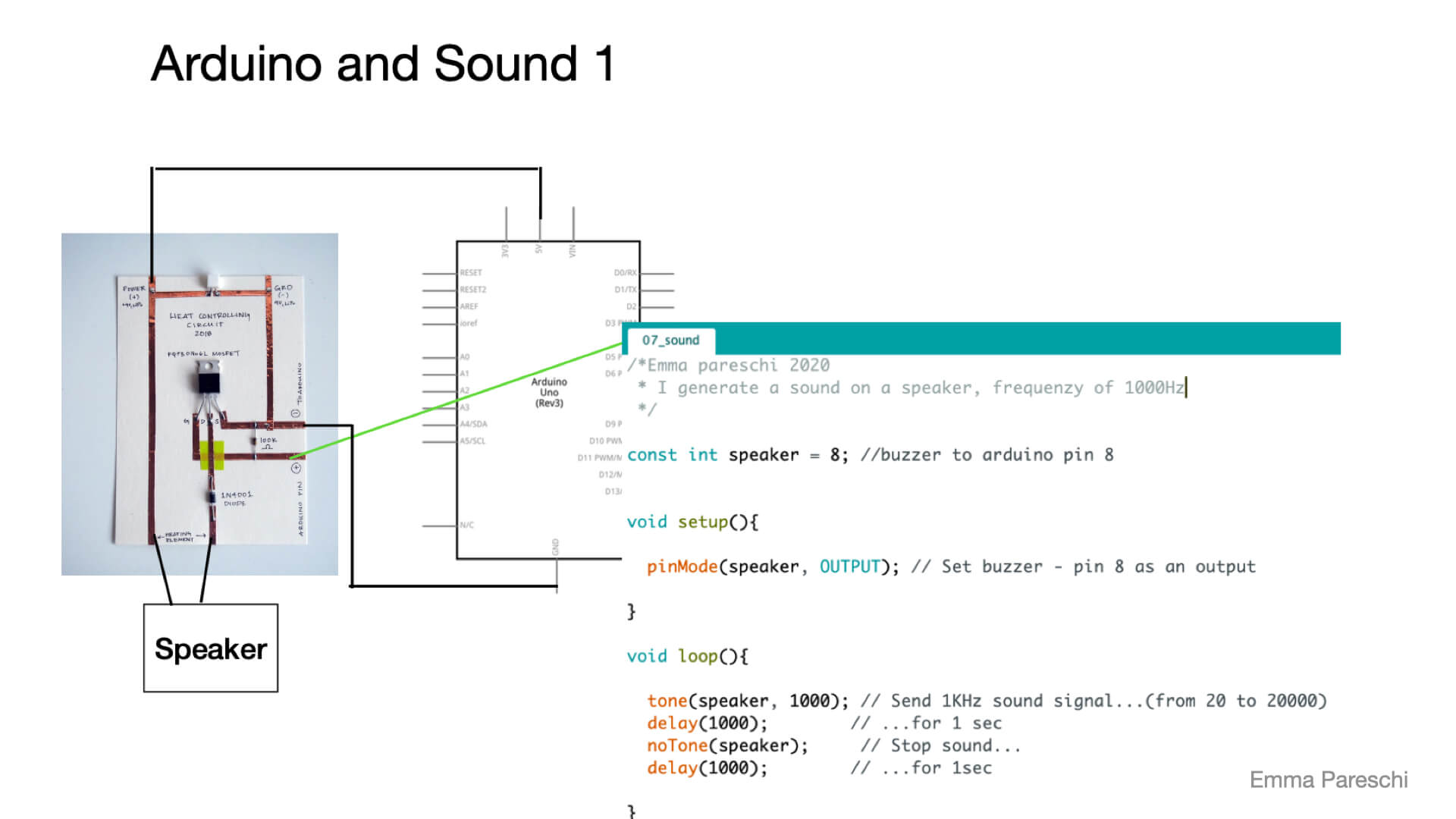
On Friday, I concentrated on the part on sound in Emma’s tutorial. I have made three speakers. One in a coconut and two embroidered ones. I’m particularly interested in trying out the Arduino buzzer module. But this is for a later stage since there’s other work waiting during the weekend also.
“Limits of the Tone Function” by Emma Pareschi
1. You can’t use tone() while also using analogWrite() on pins 3 or 11. If you do – you get some whacky results – neither will work like you expect. That’s because the tone() function uses the same built in timer that analogWrite() does for pins 3 and 11. It’s worth trying just hear the weird noises.
2. You cannot generate a tone lower than 31 HZ. You can pass values 31 and less to the tone() function, but it doesn’t mean you will get a good representation of it.
3. The tone() function cannot be used by two separate pins at the same time. Let’s say you have two separate piezo speakers, each on a different pin. You can’t have them both play at the same time. One has to be on, and then the other. Furthermore, before you can have the other pin use the tone() function, you must call the noTone() function and “turn off” the tone from the previous pin.